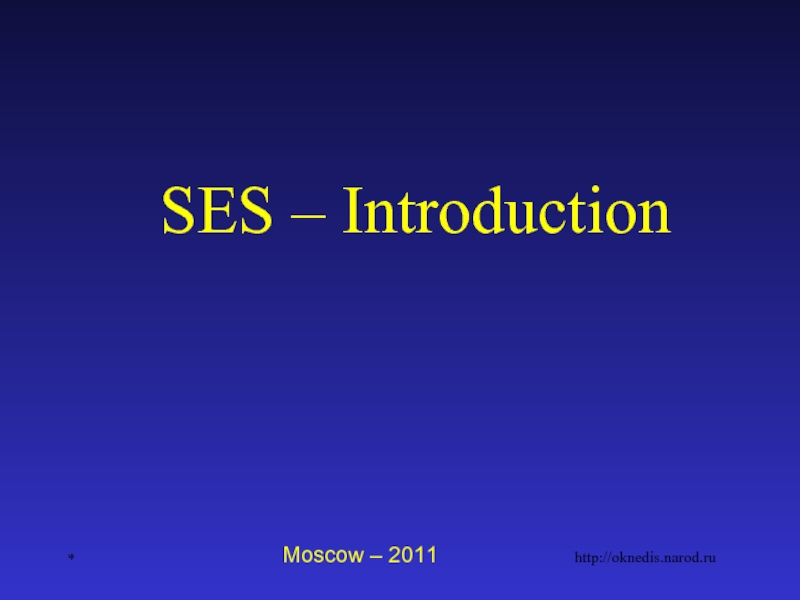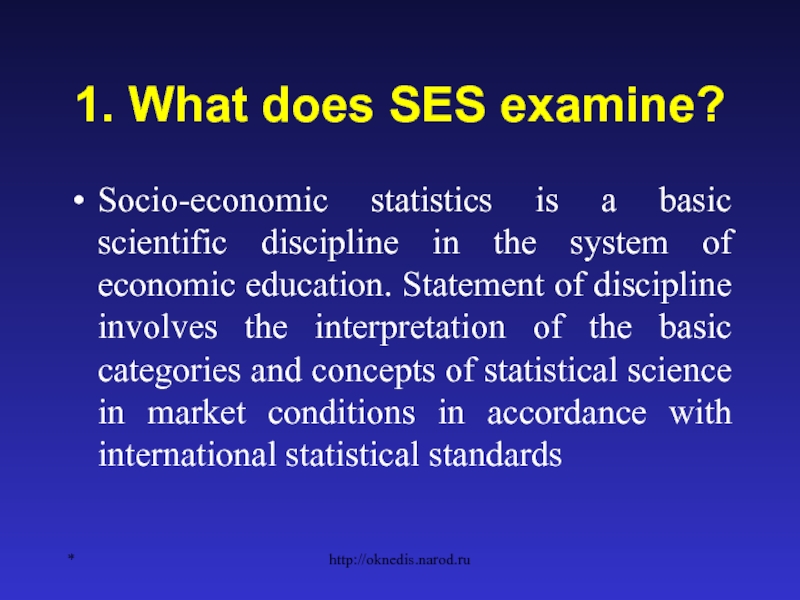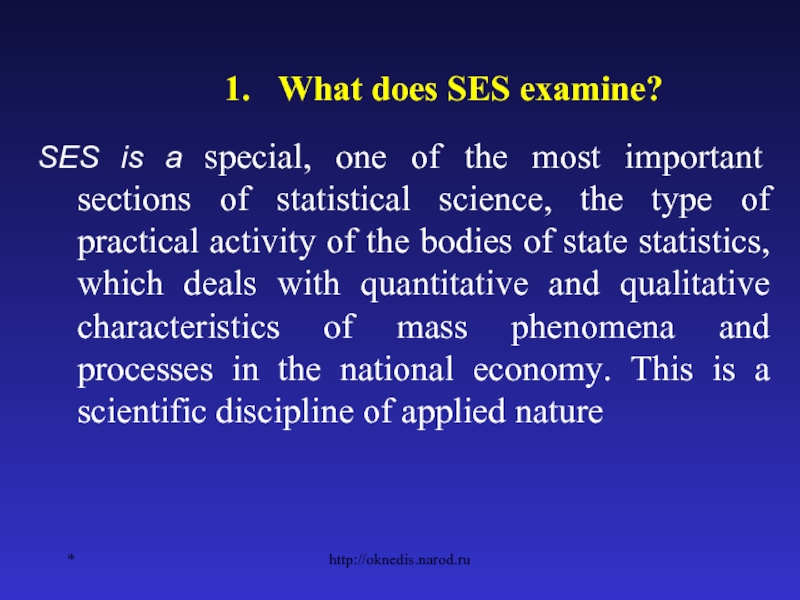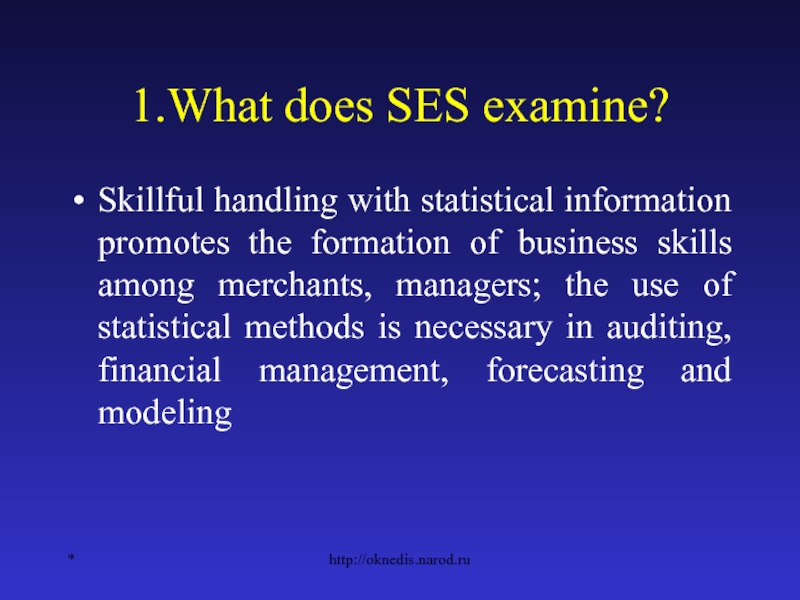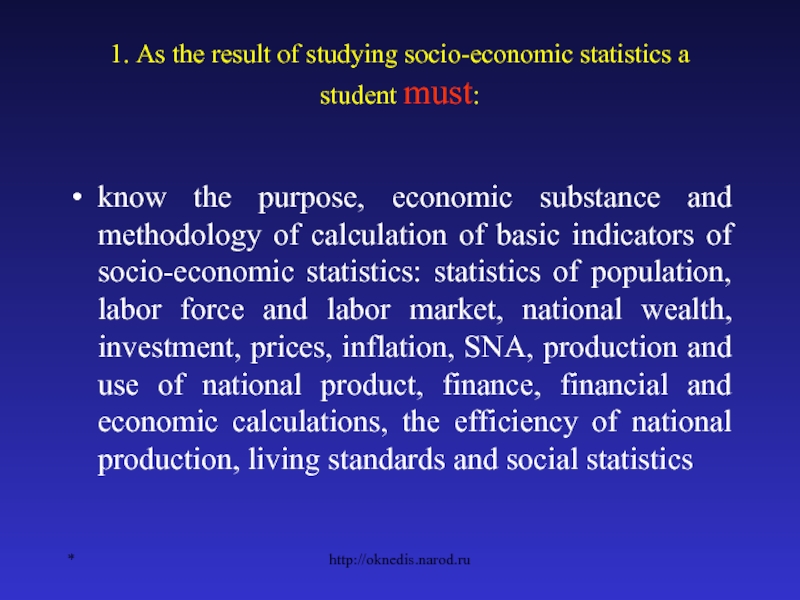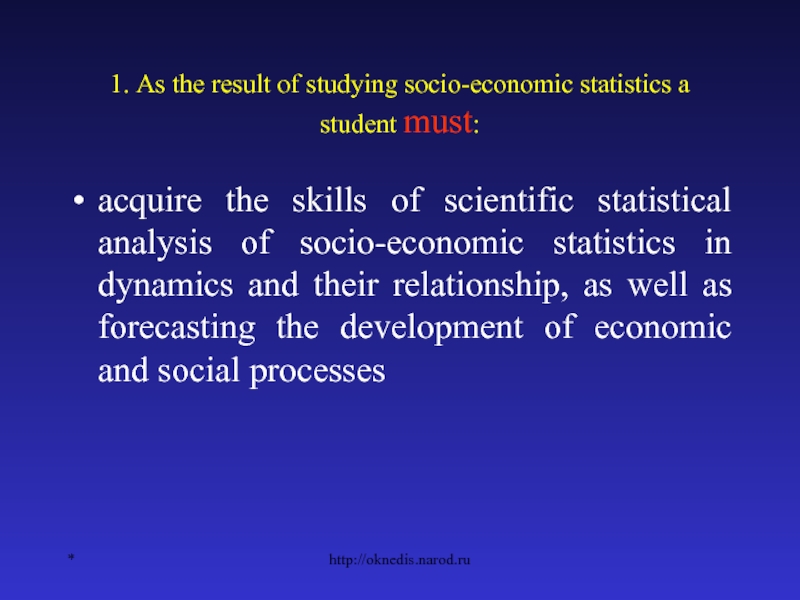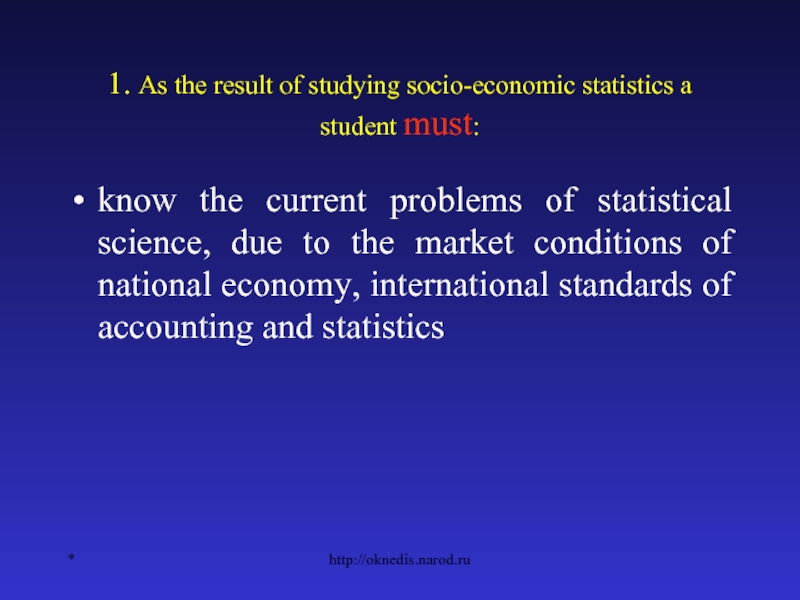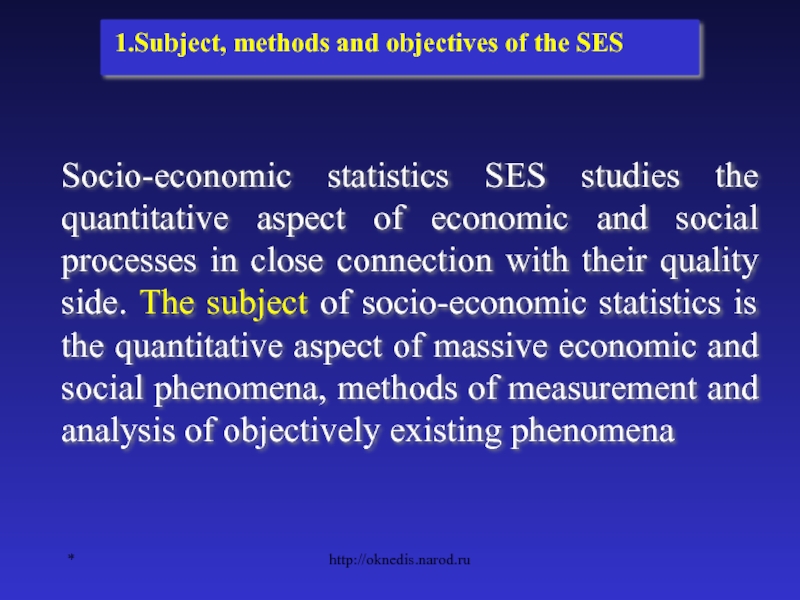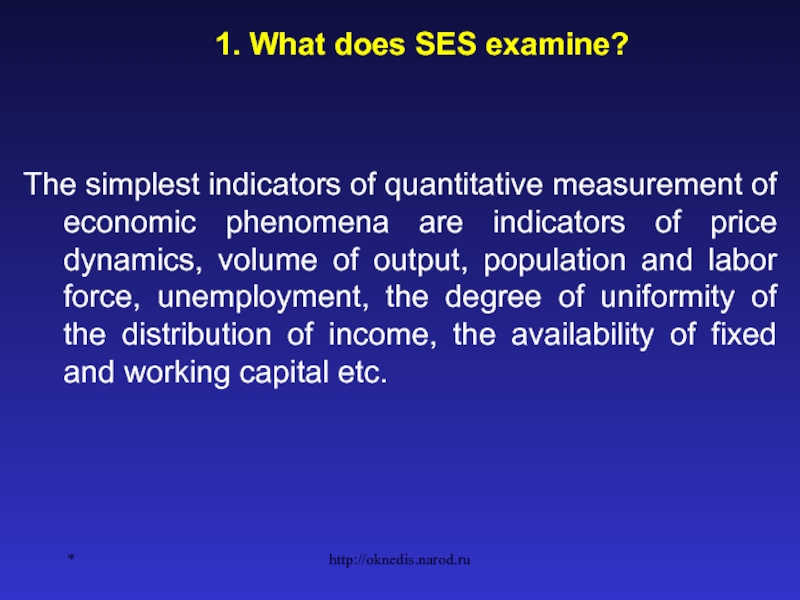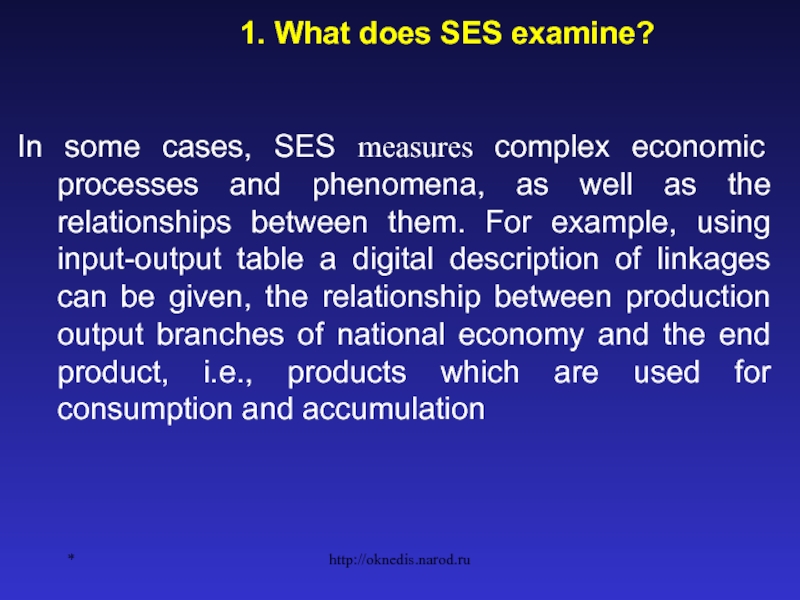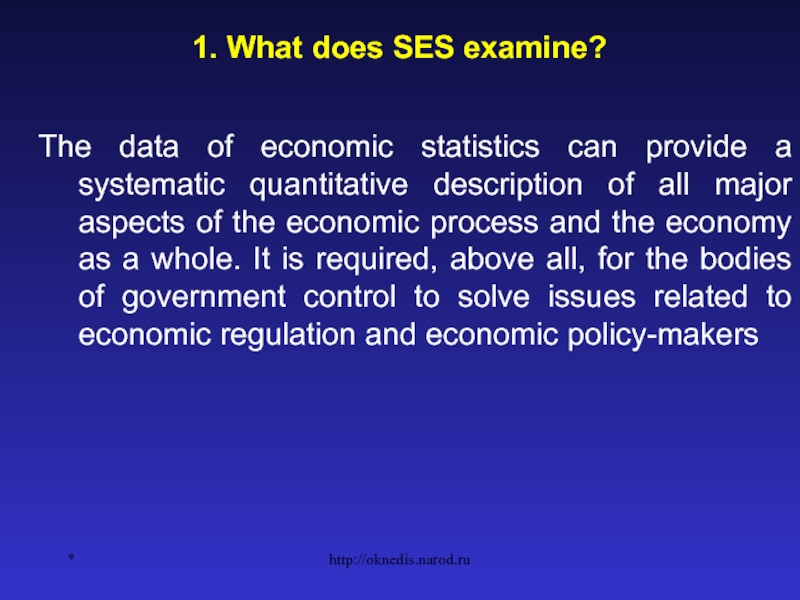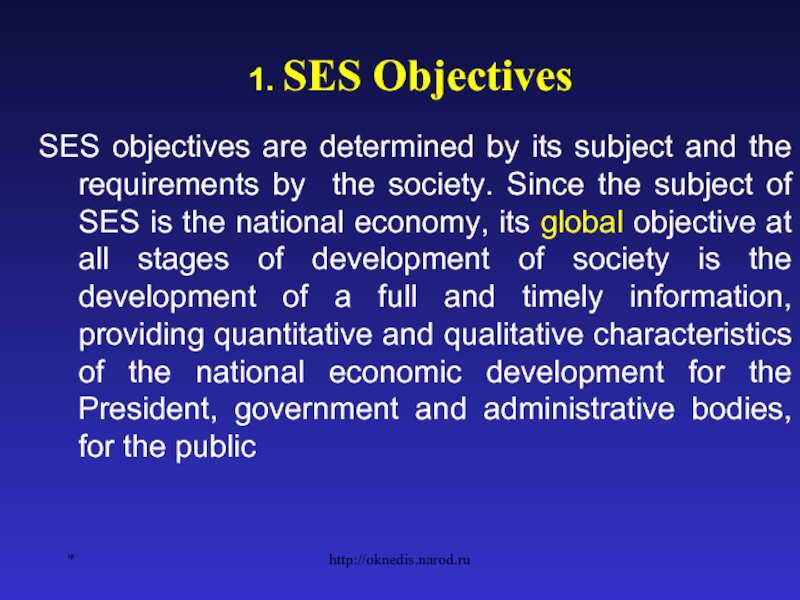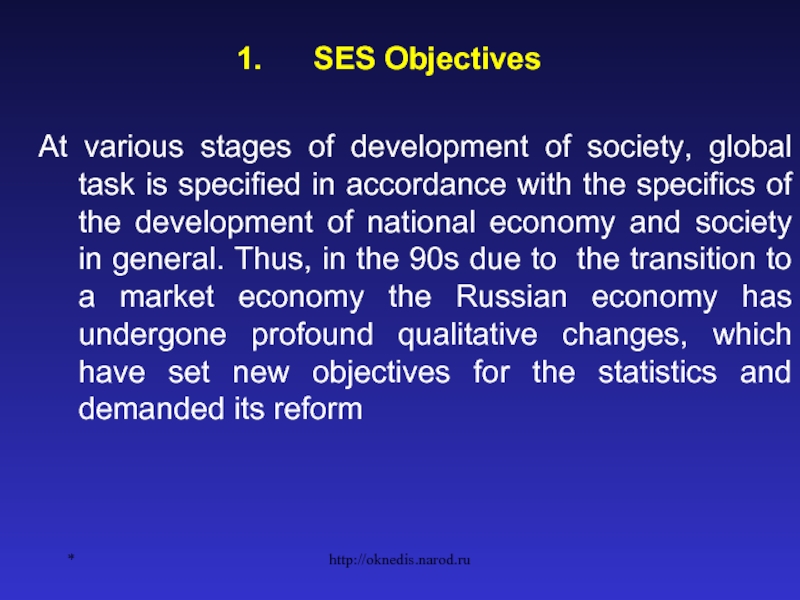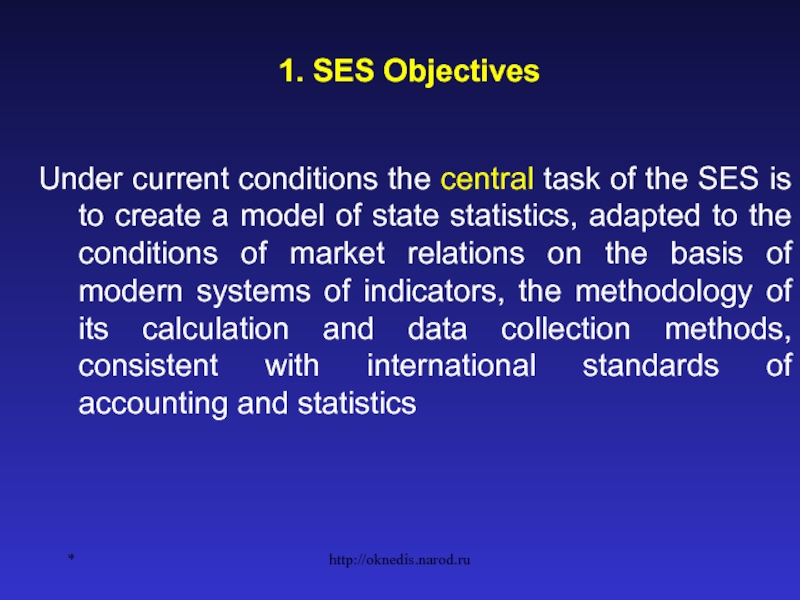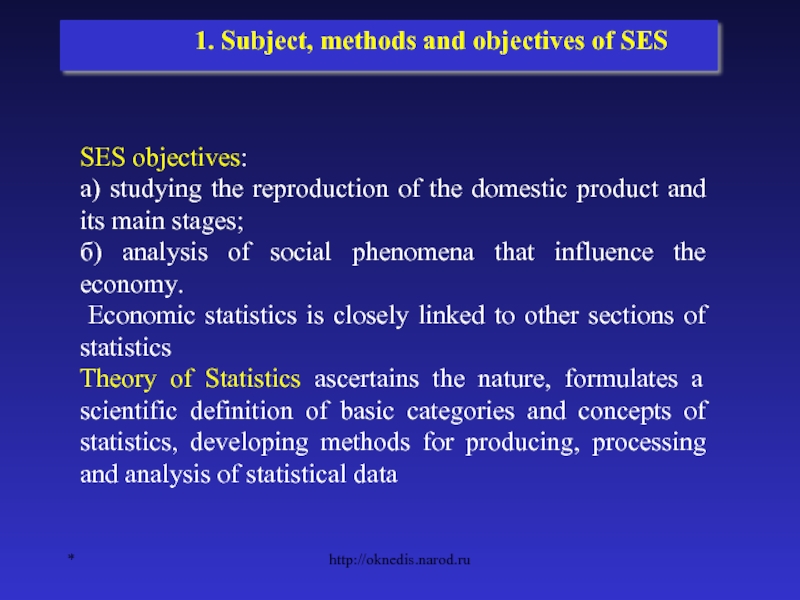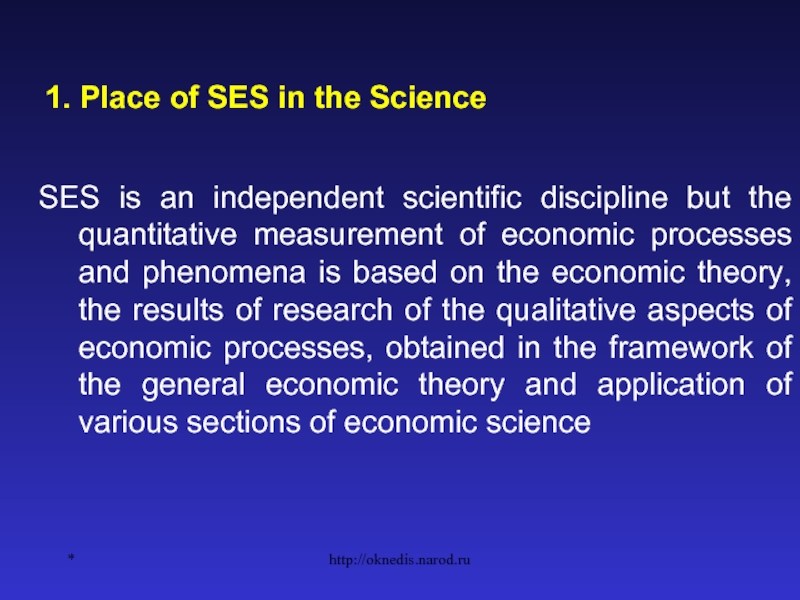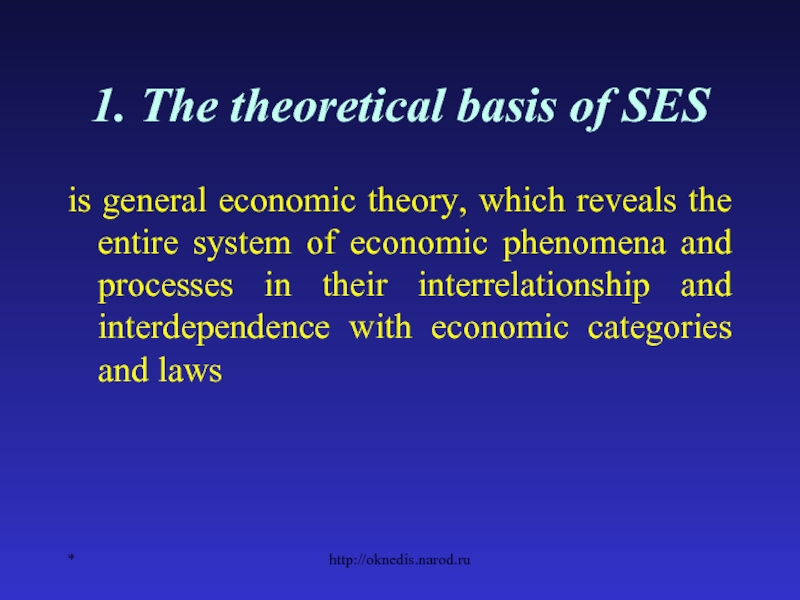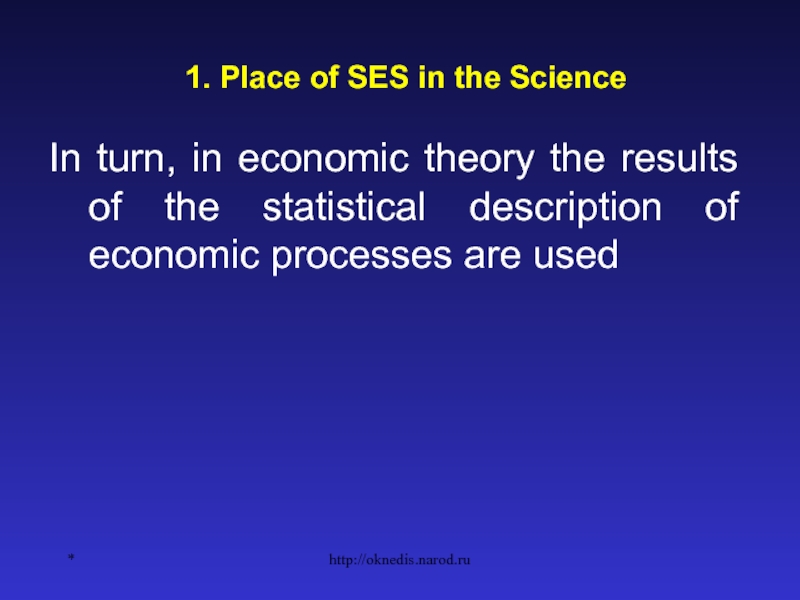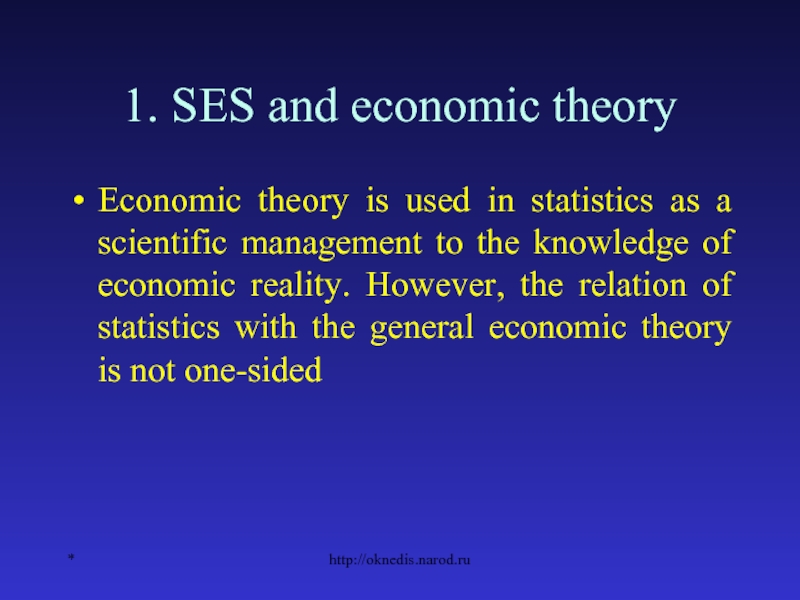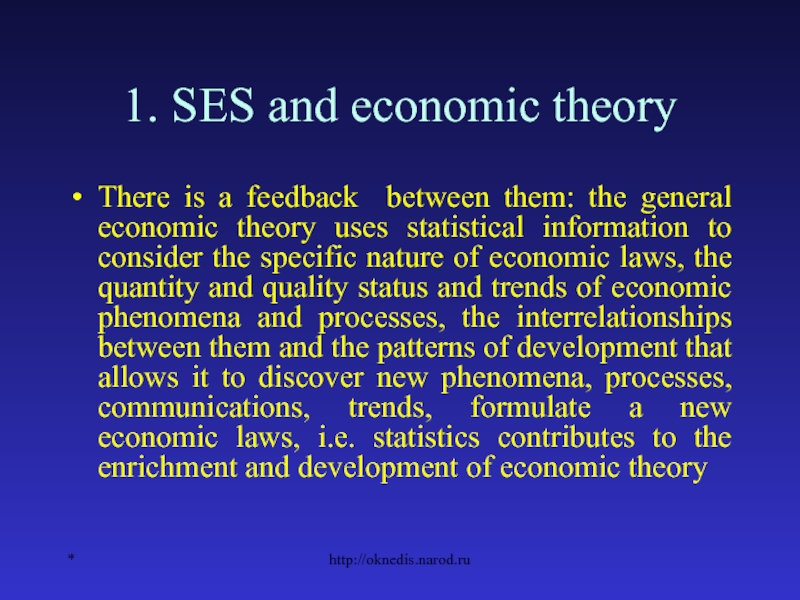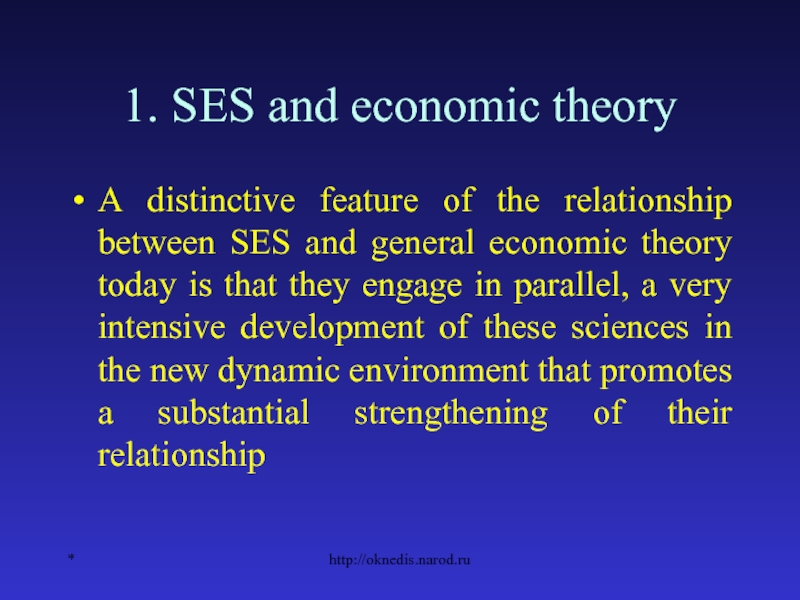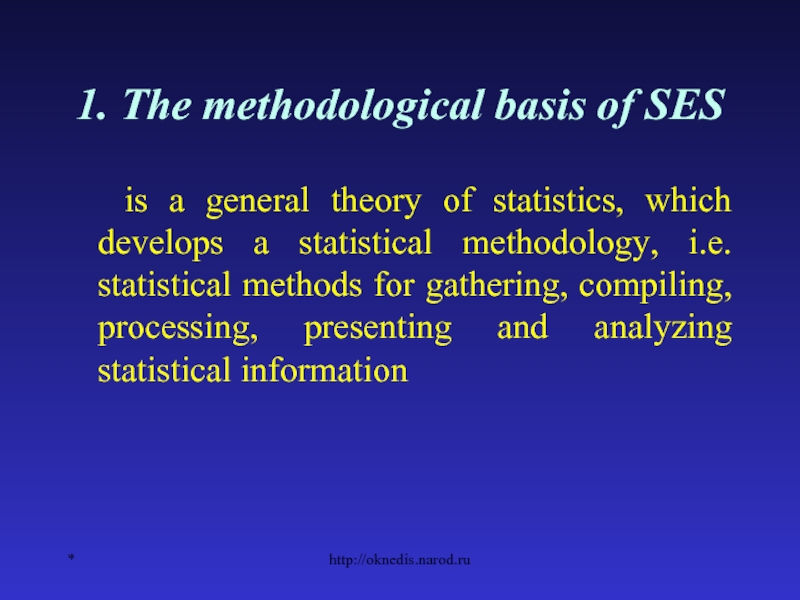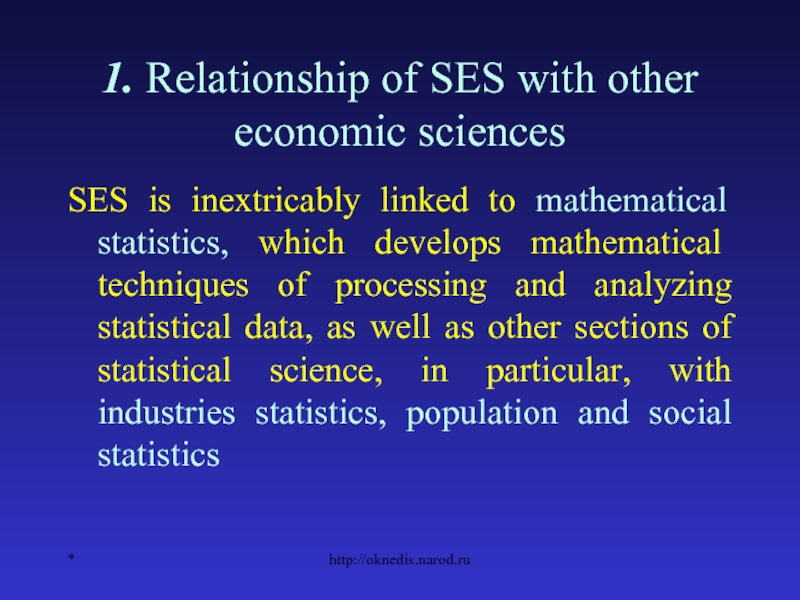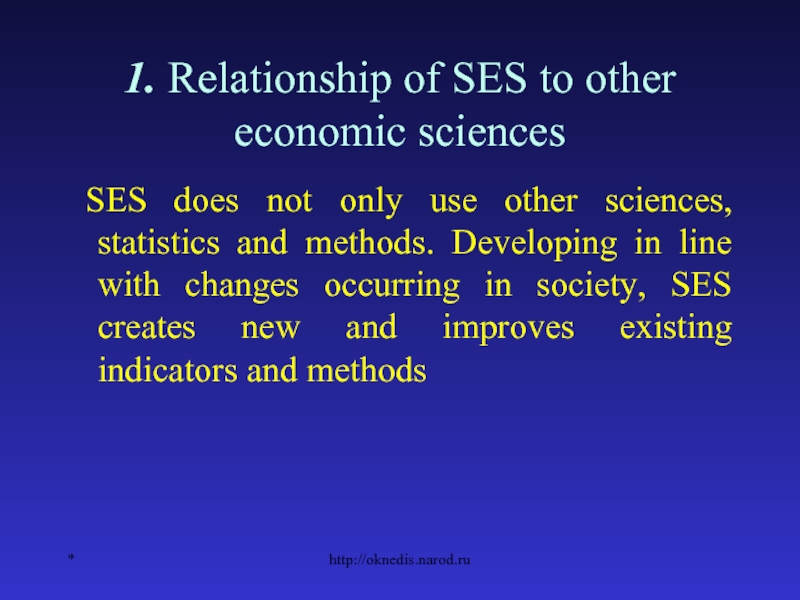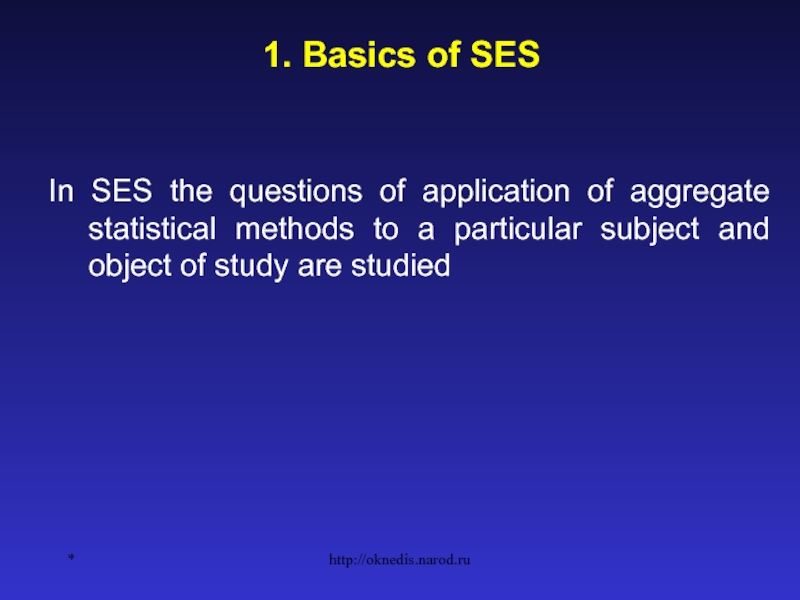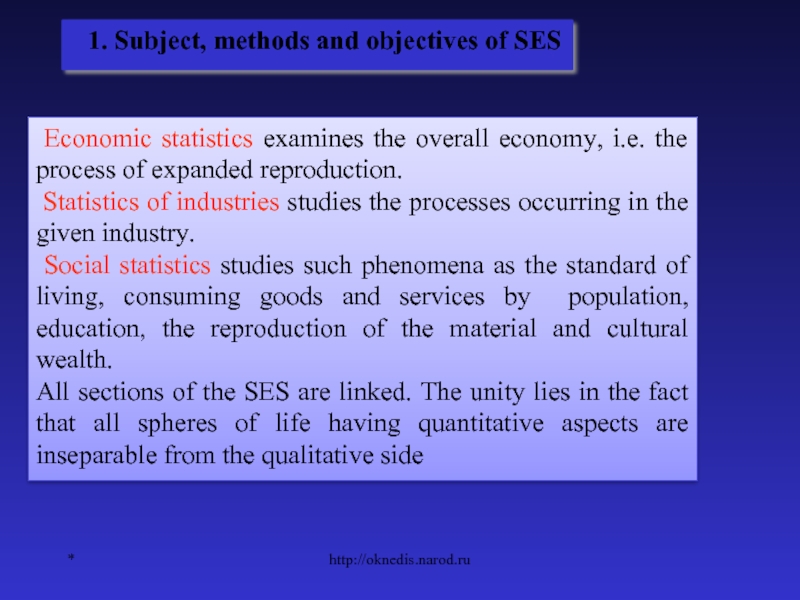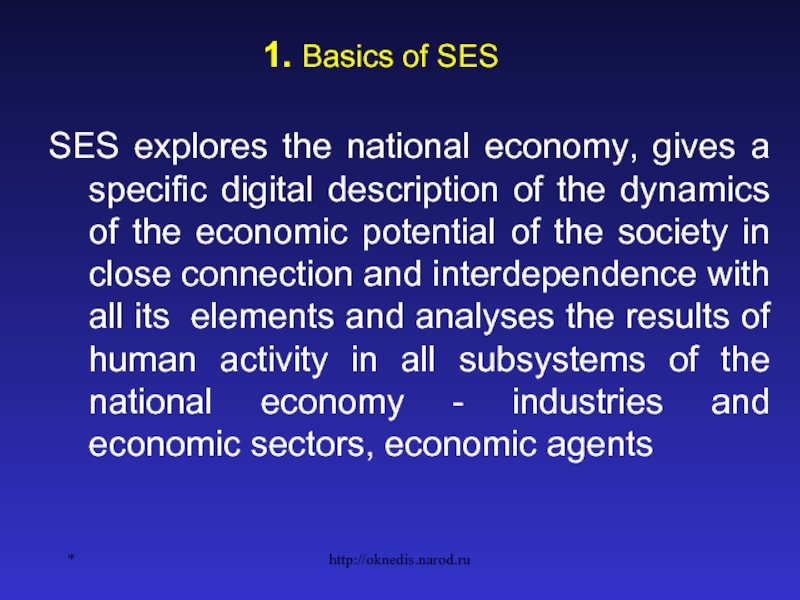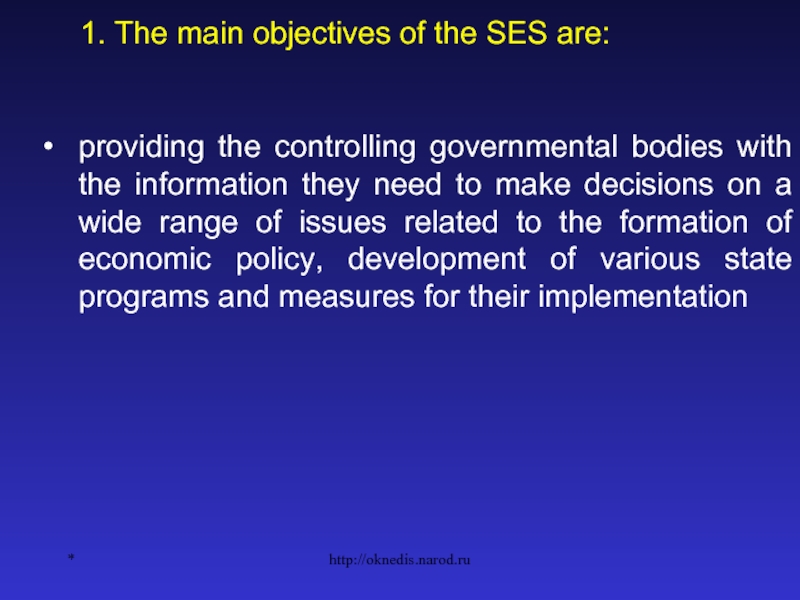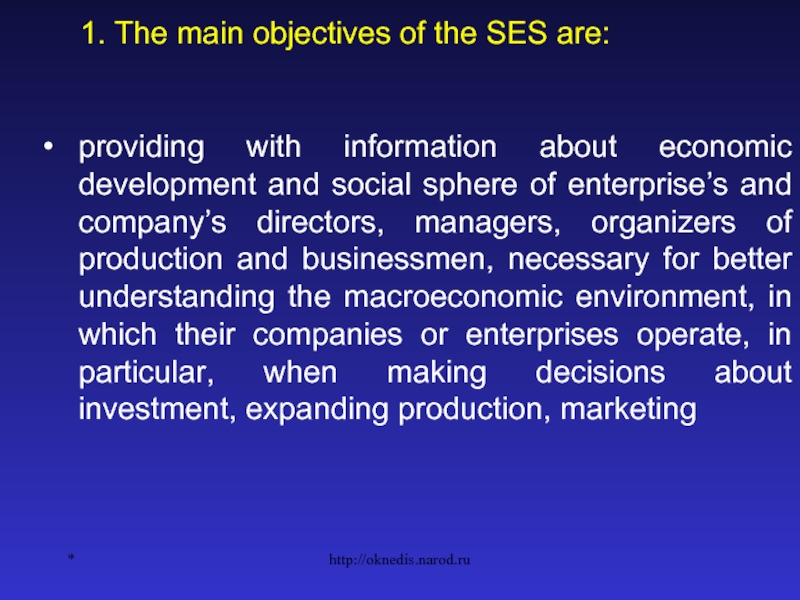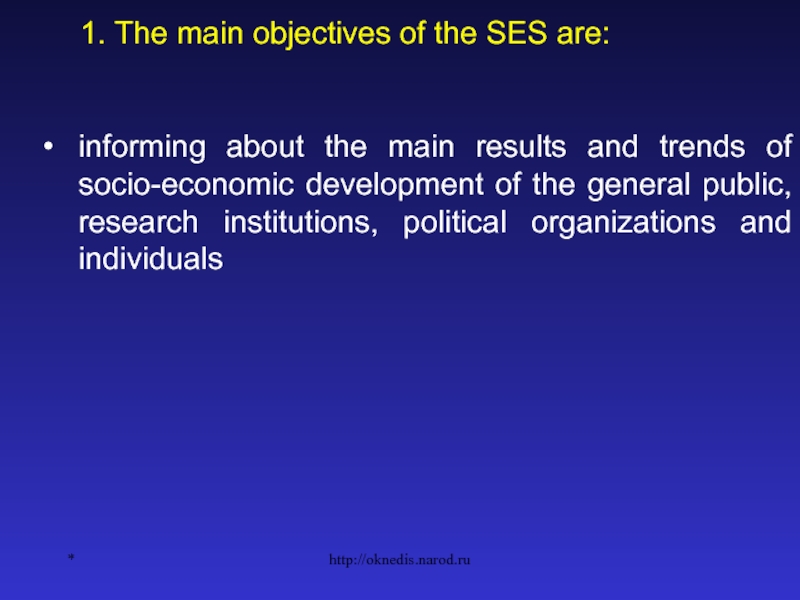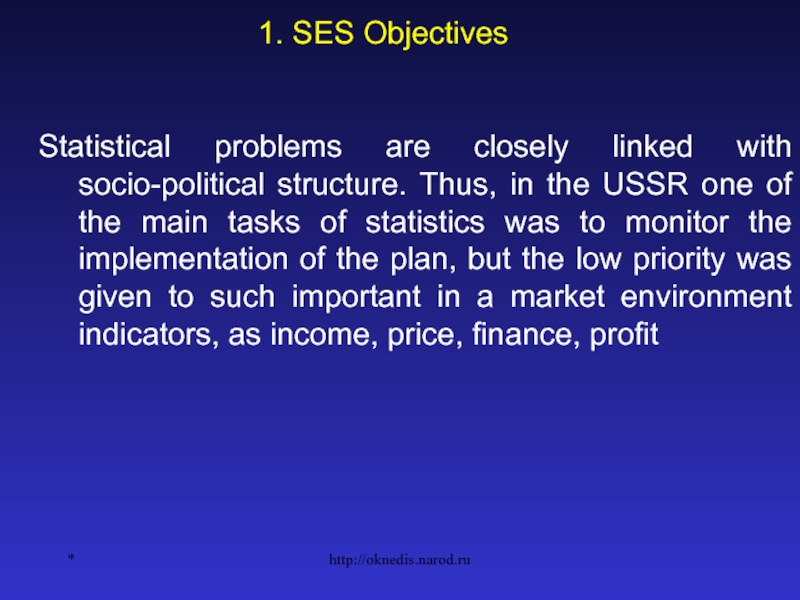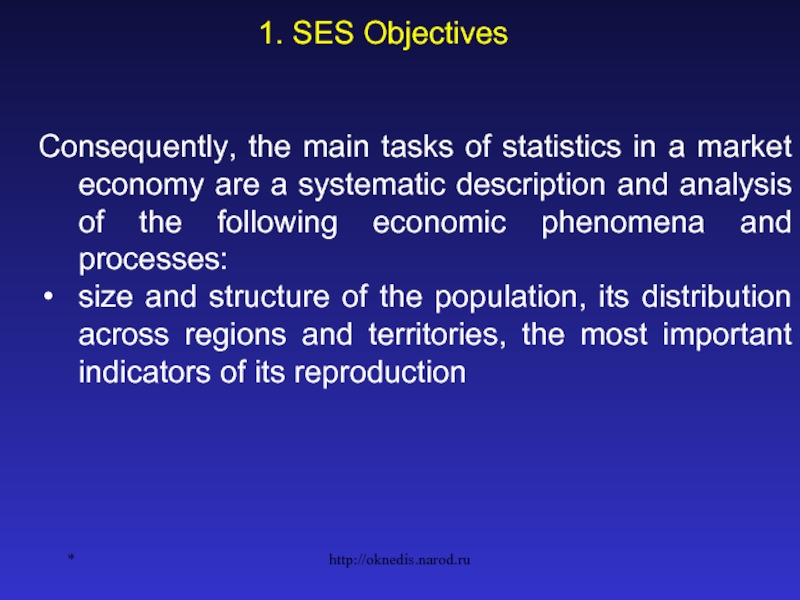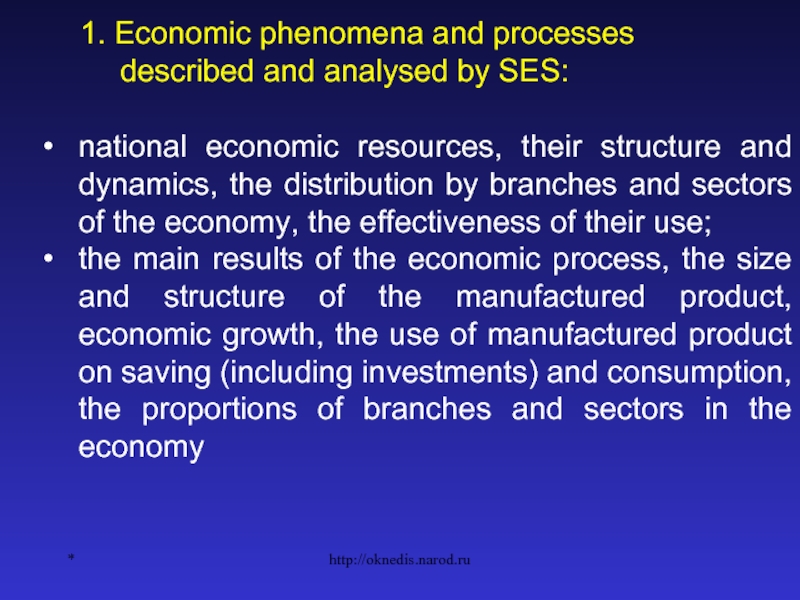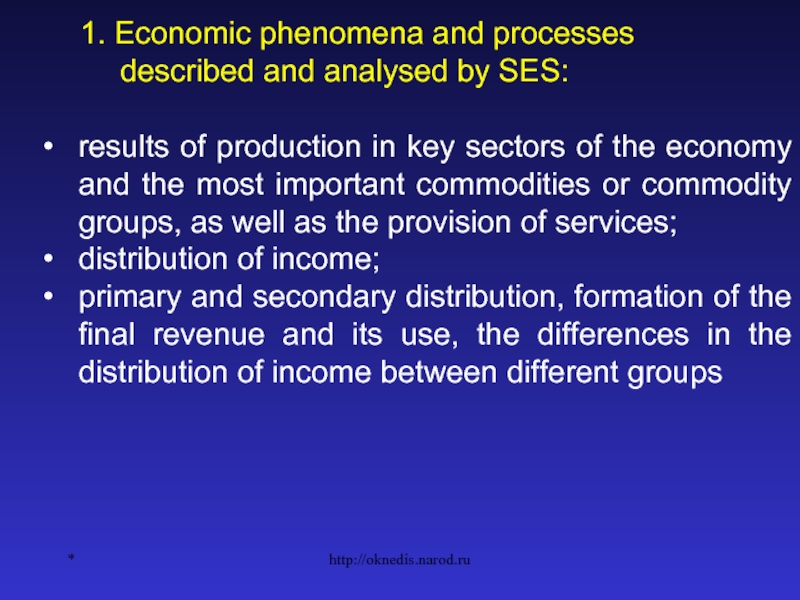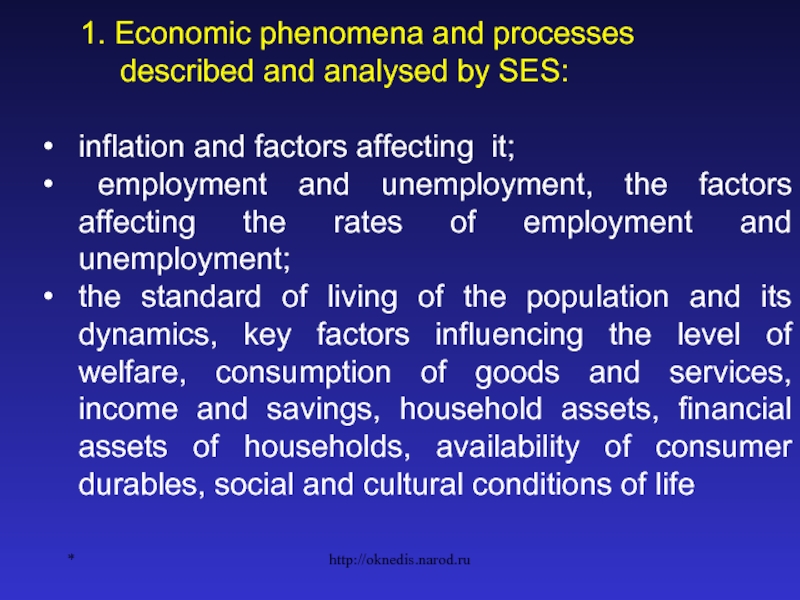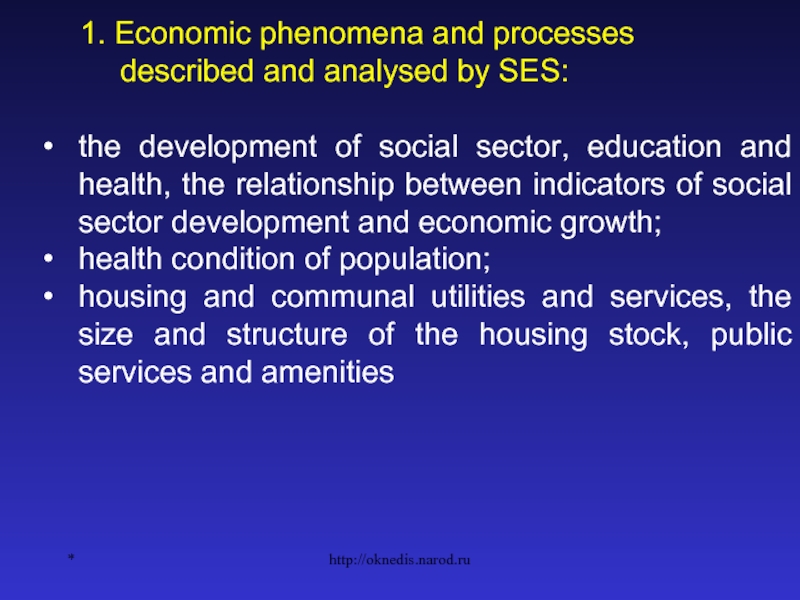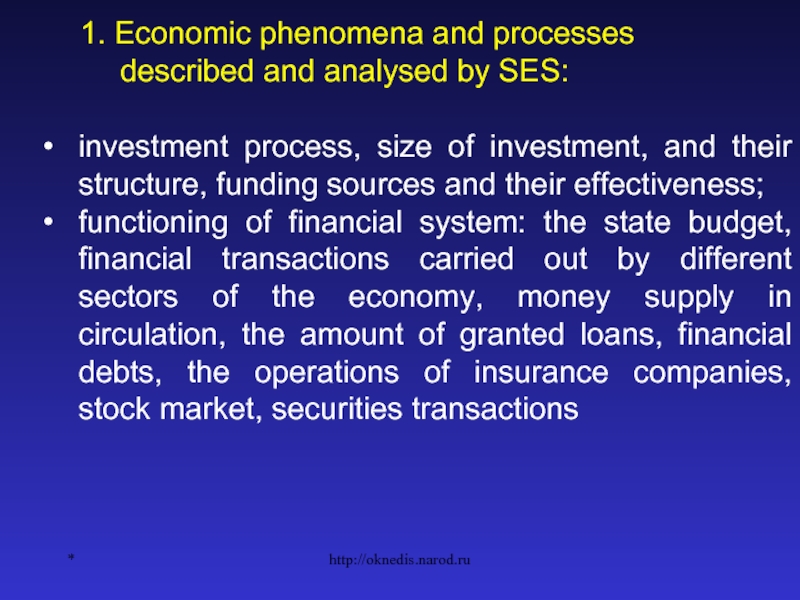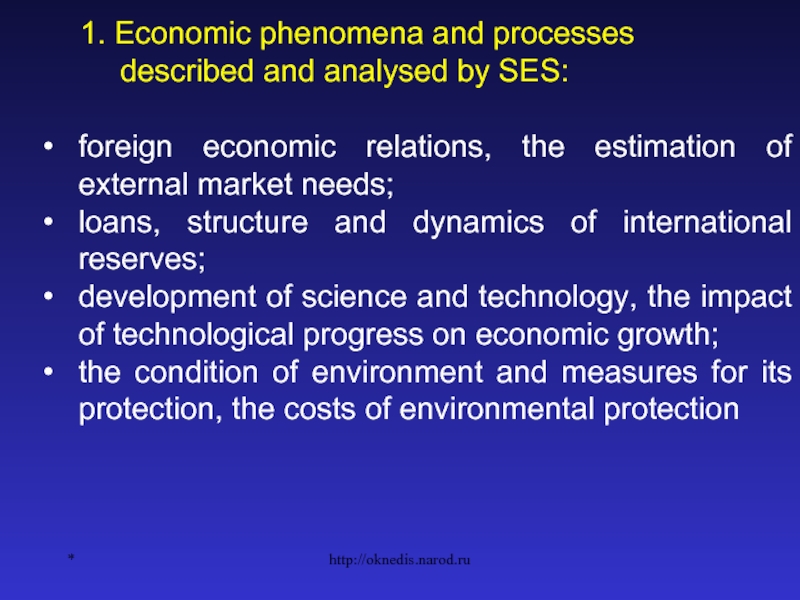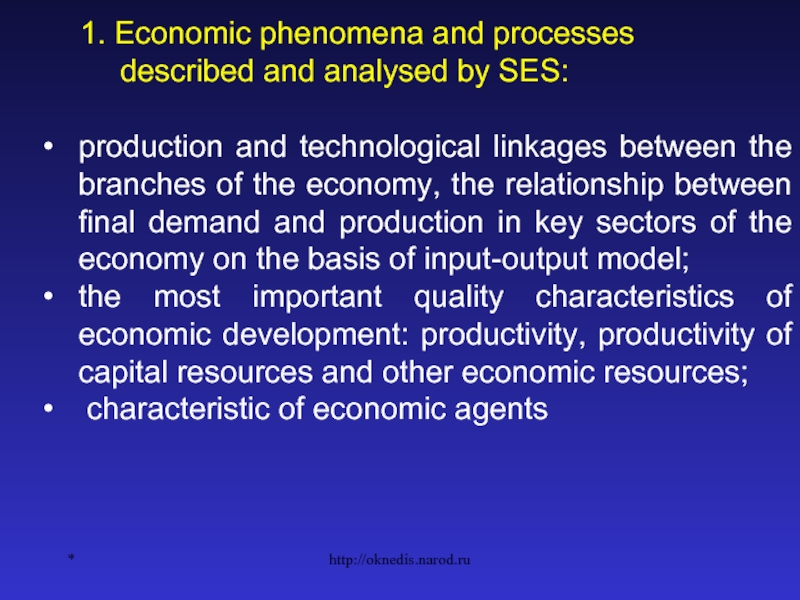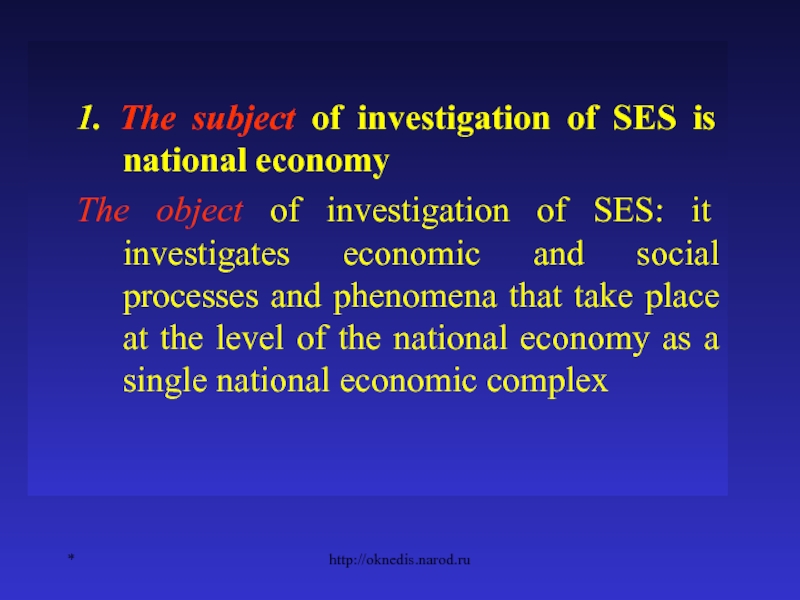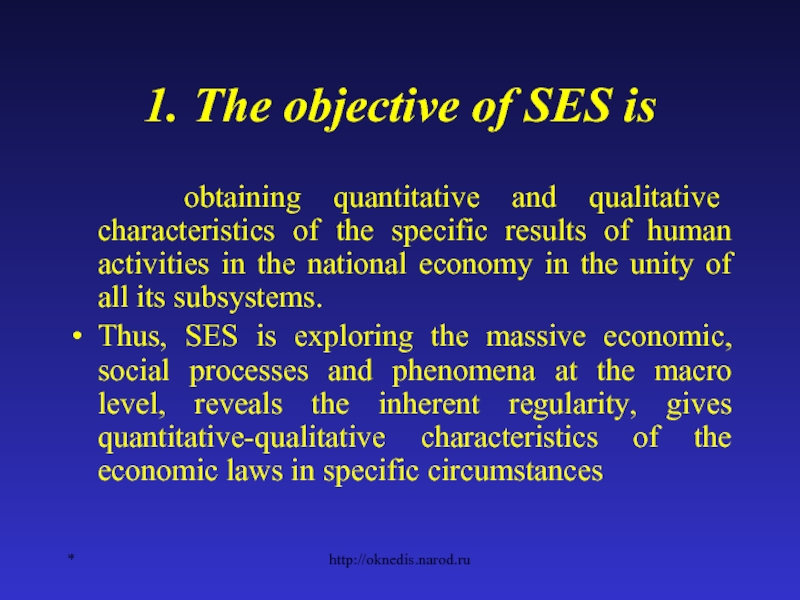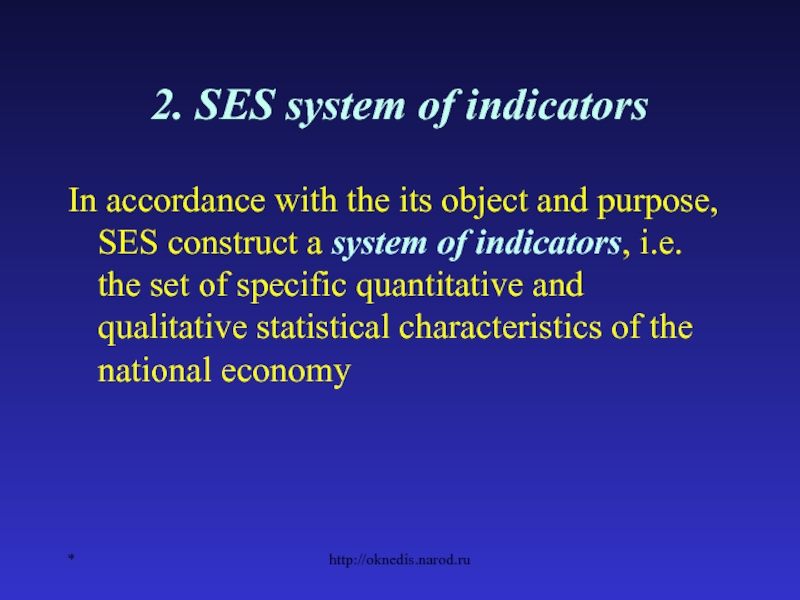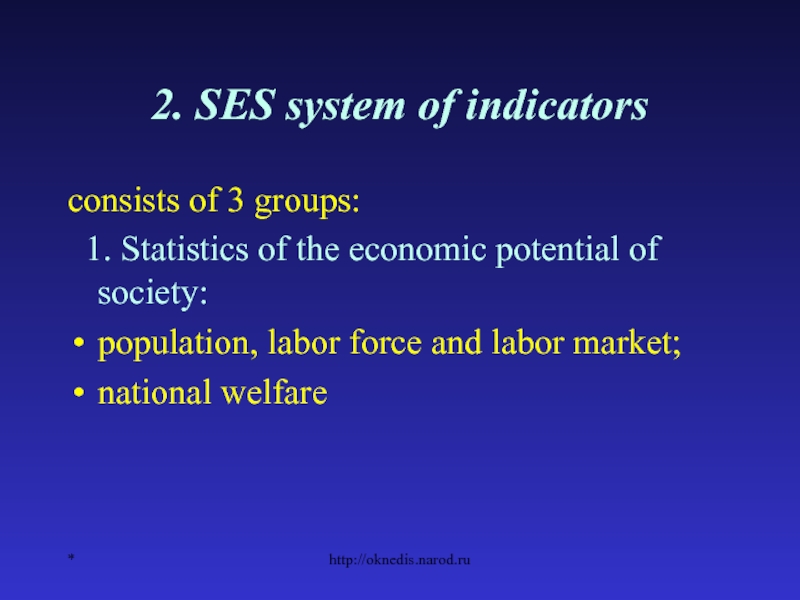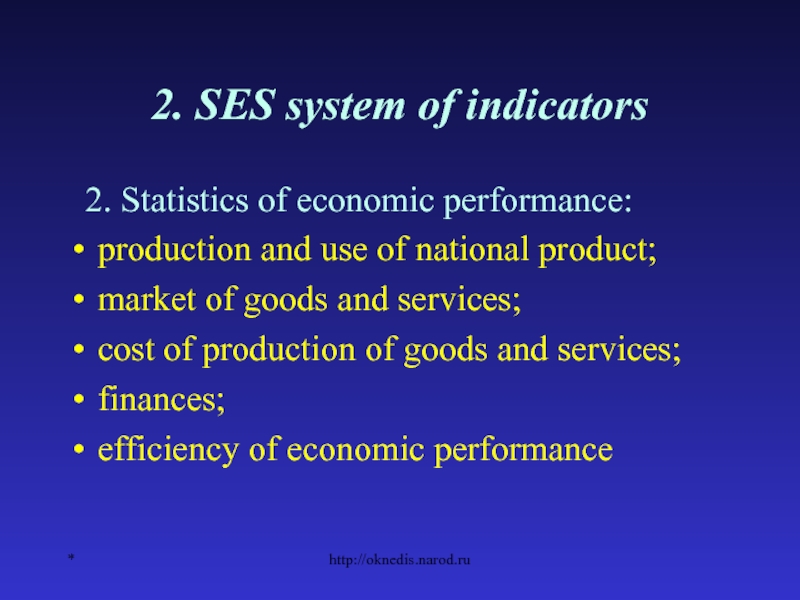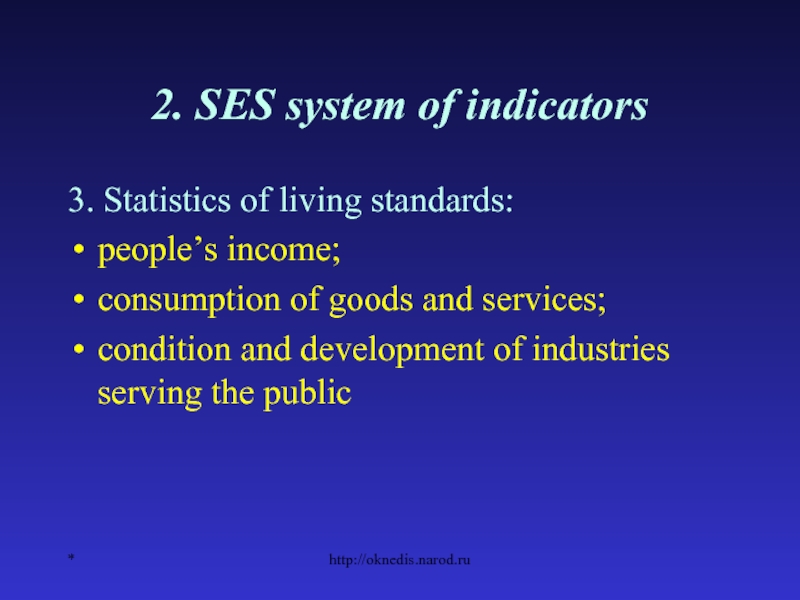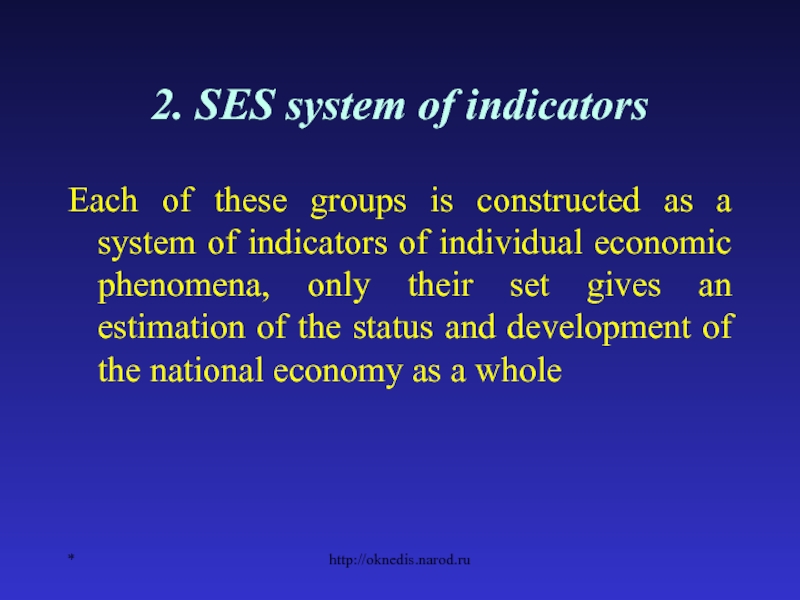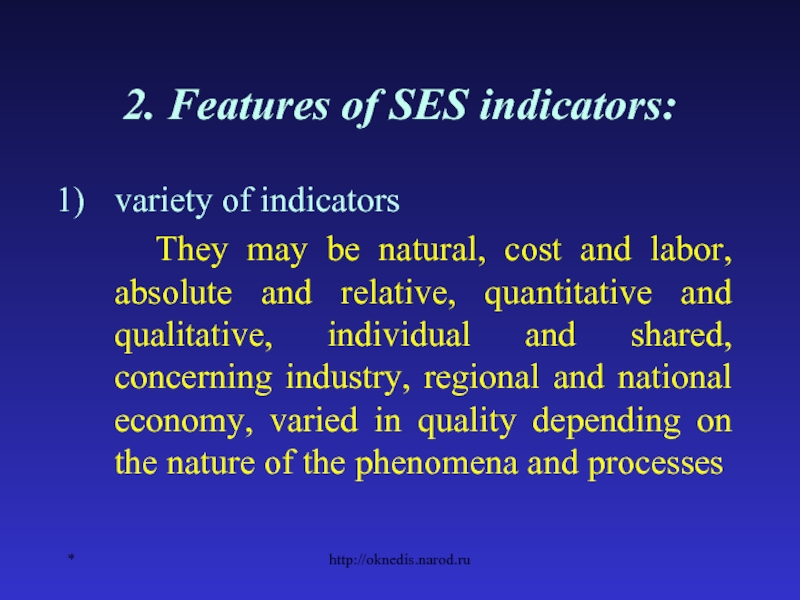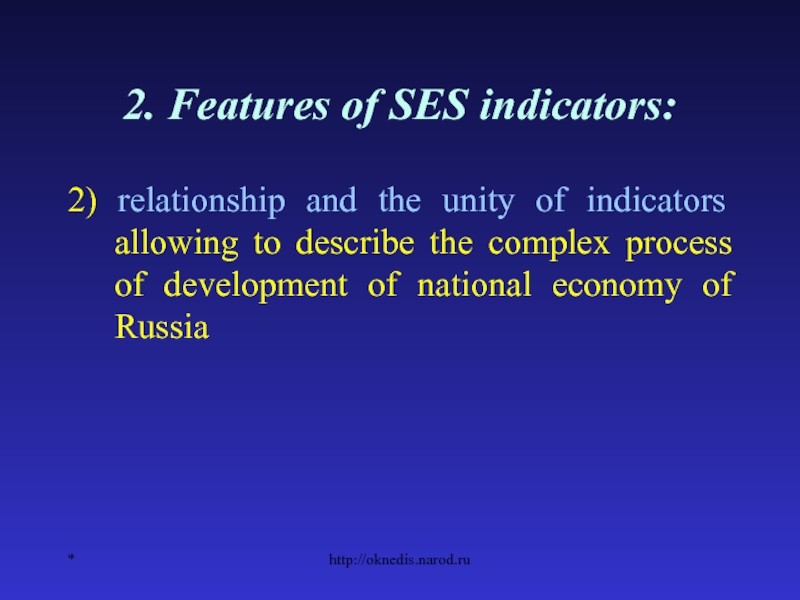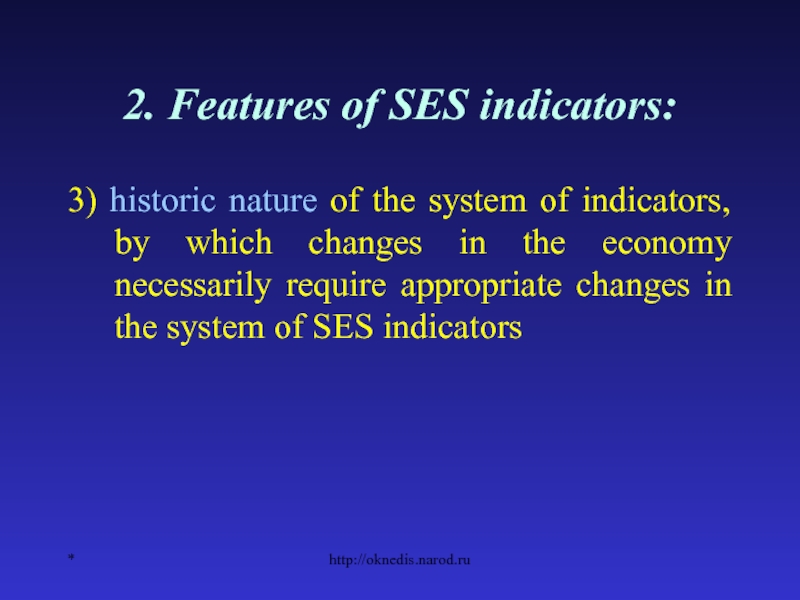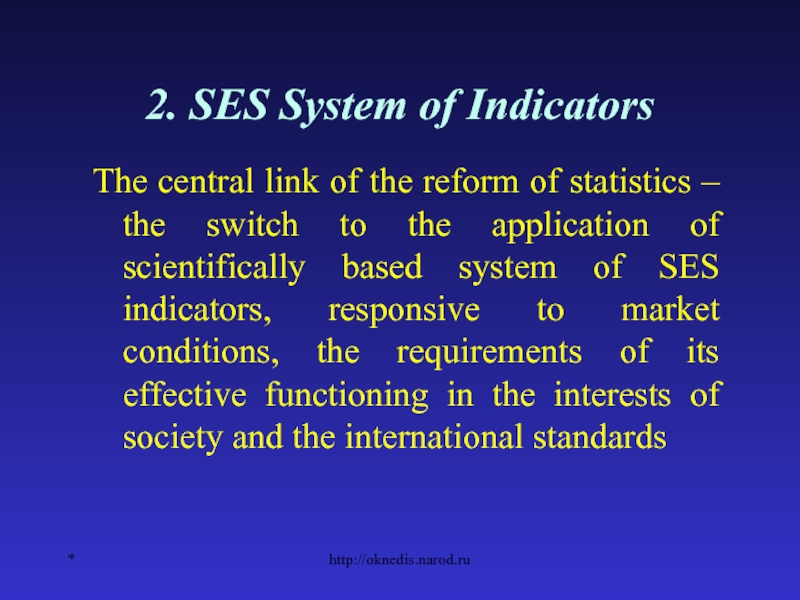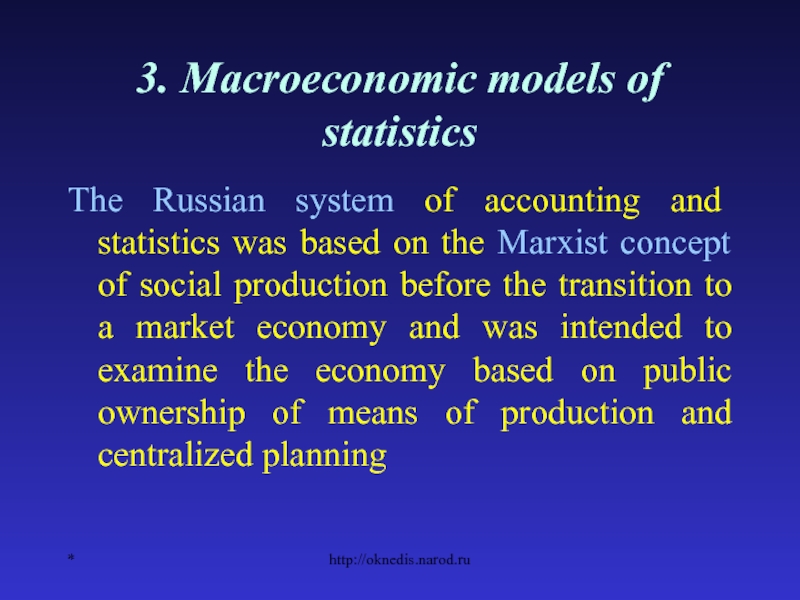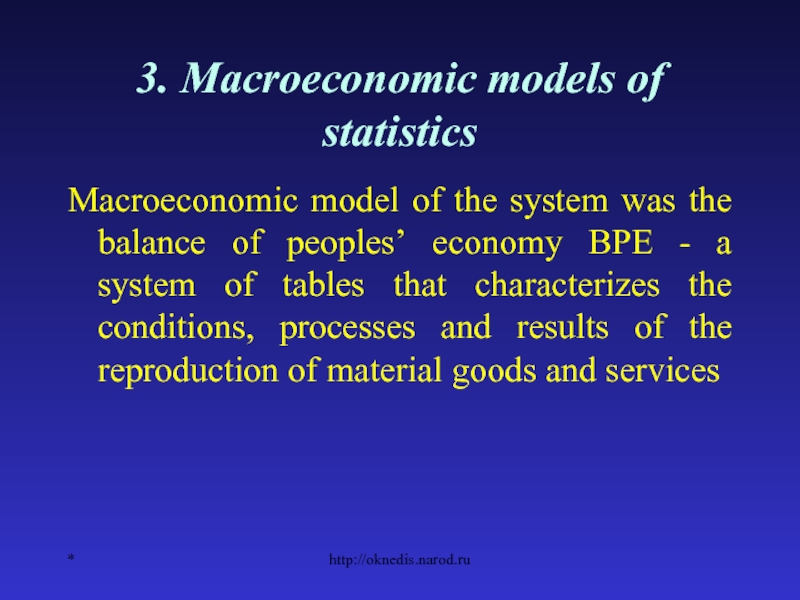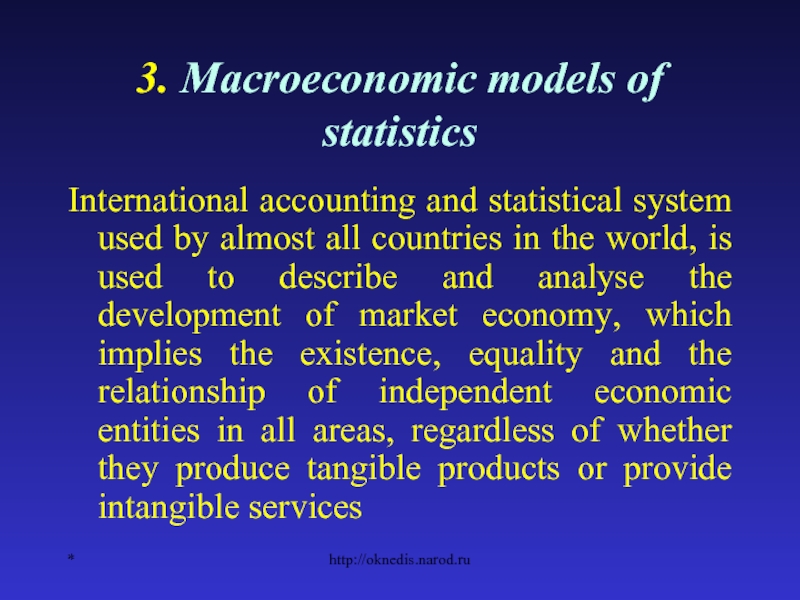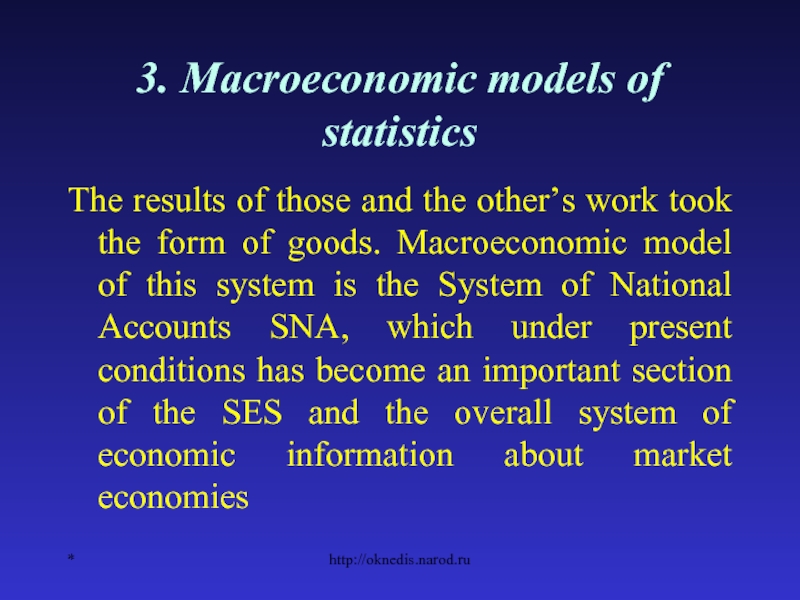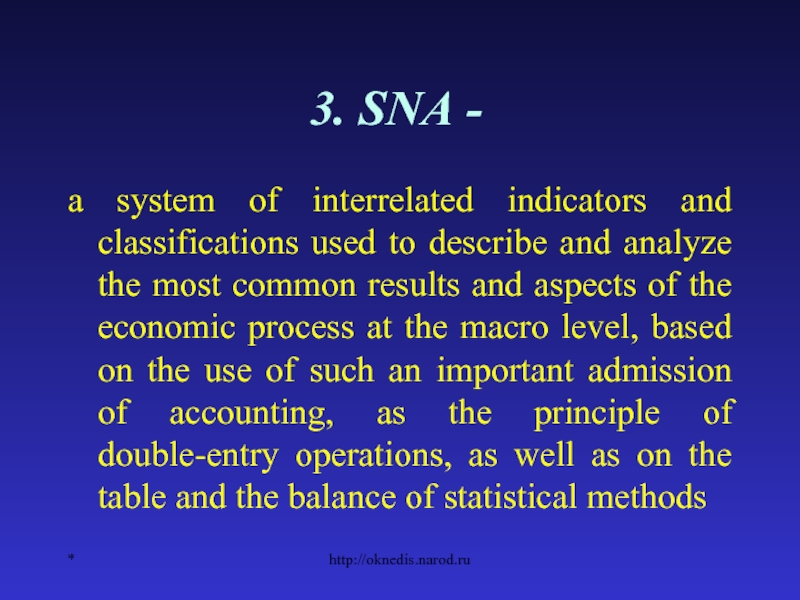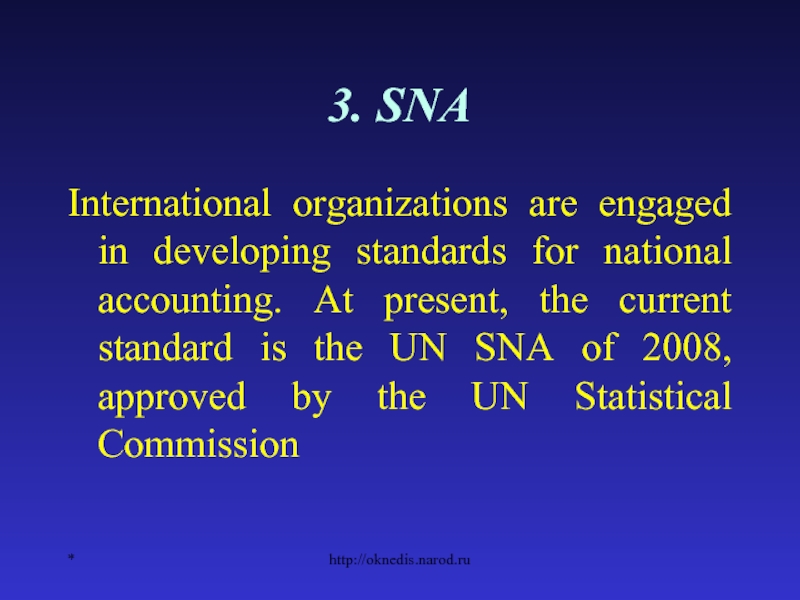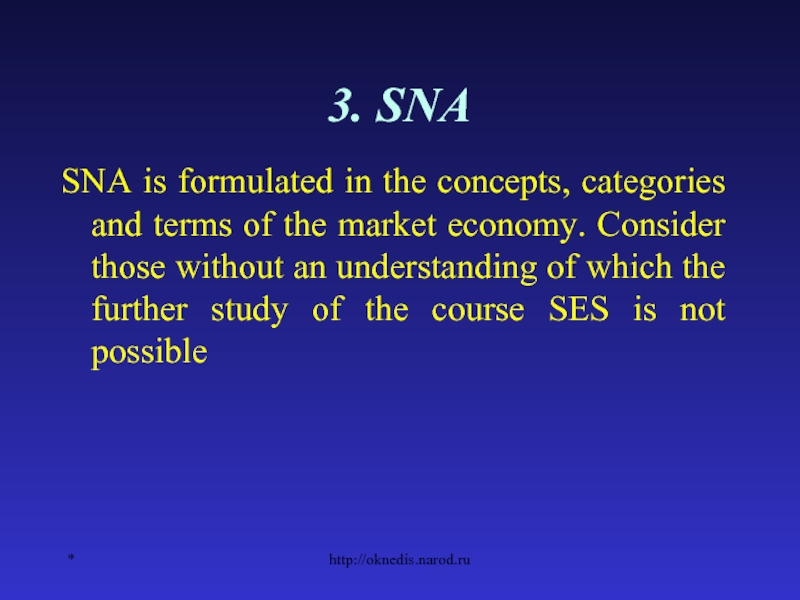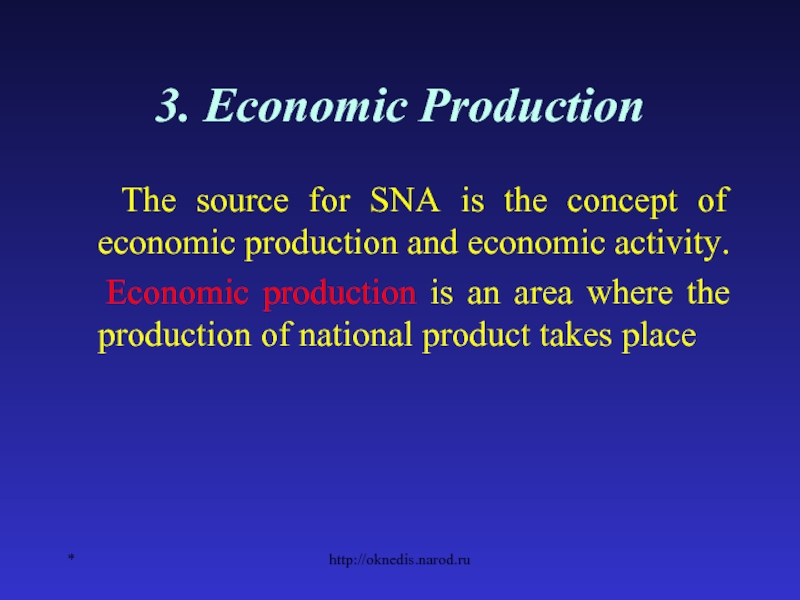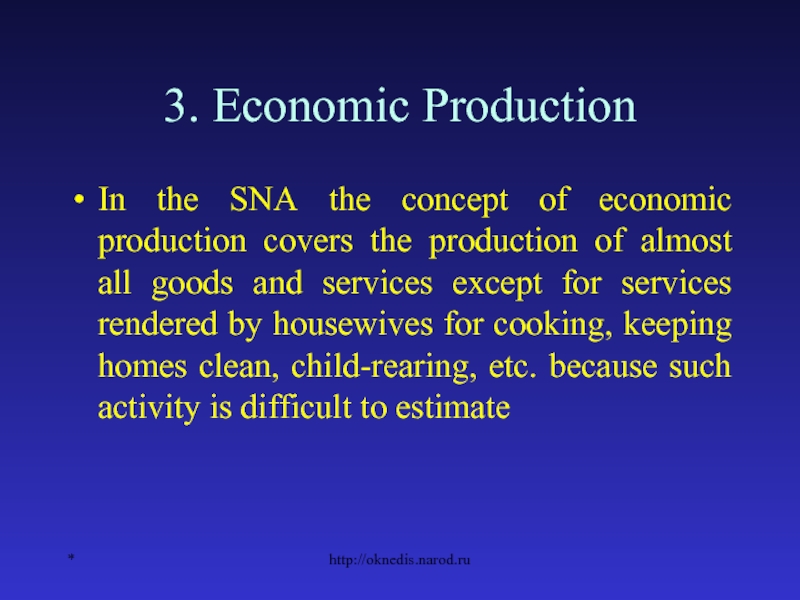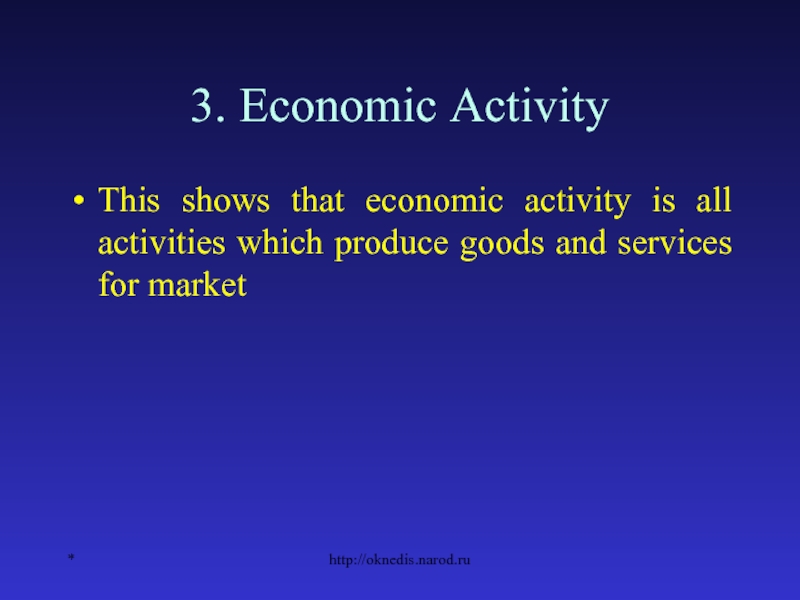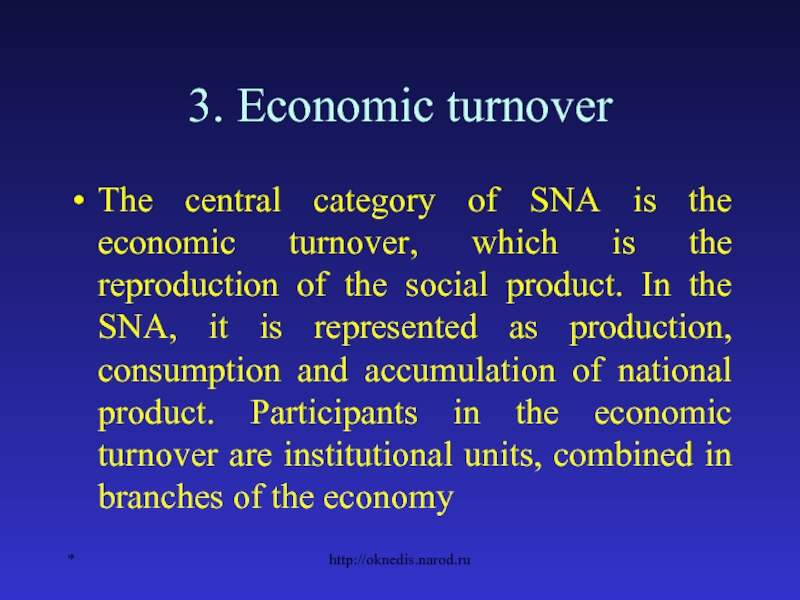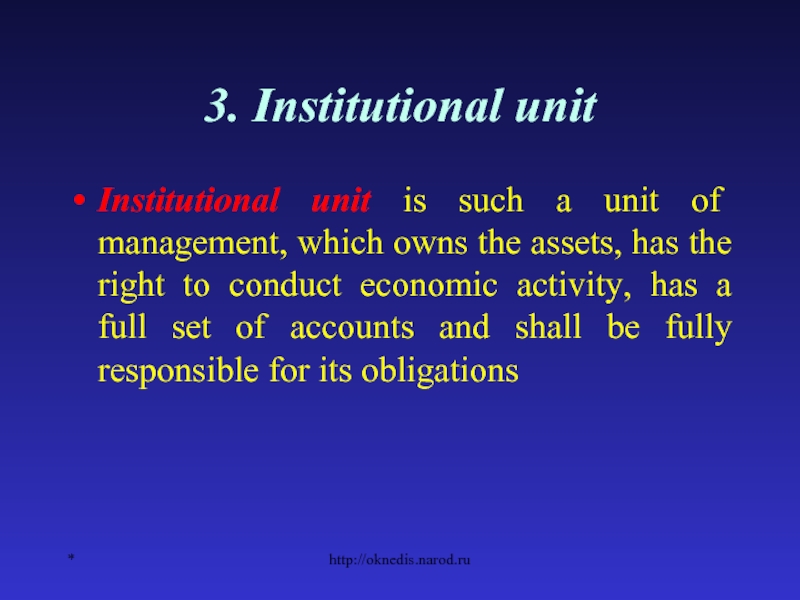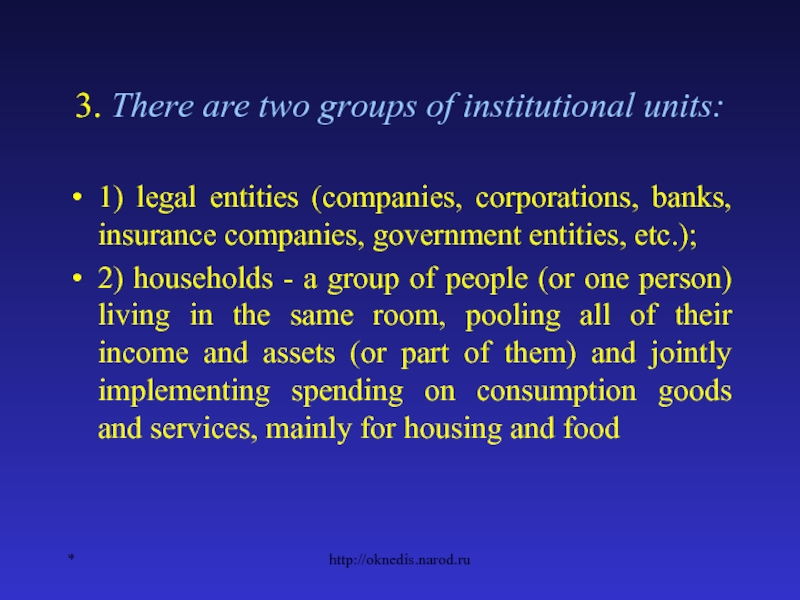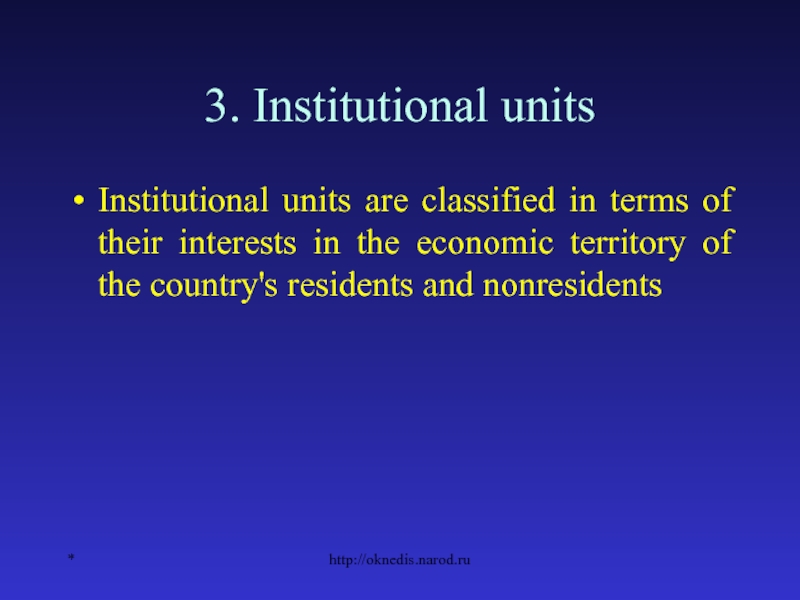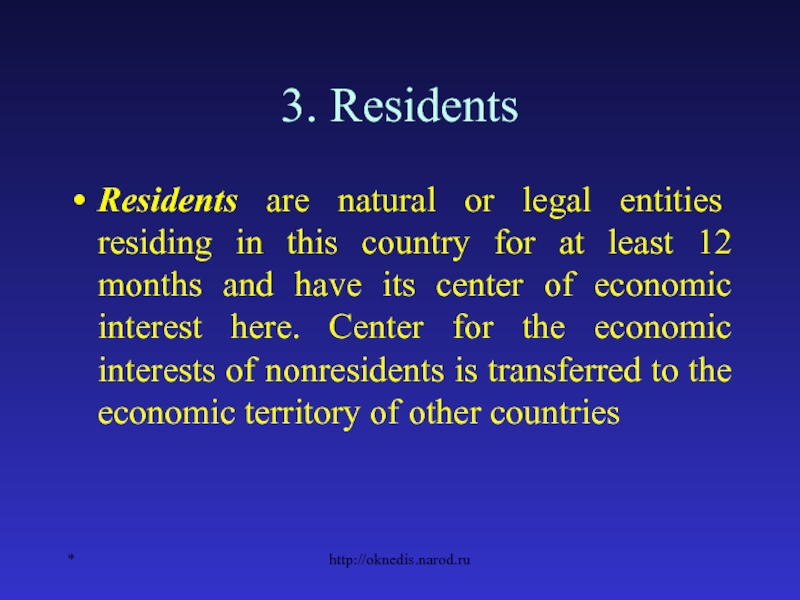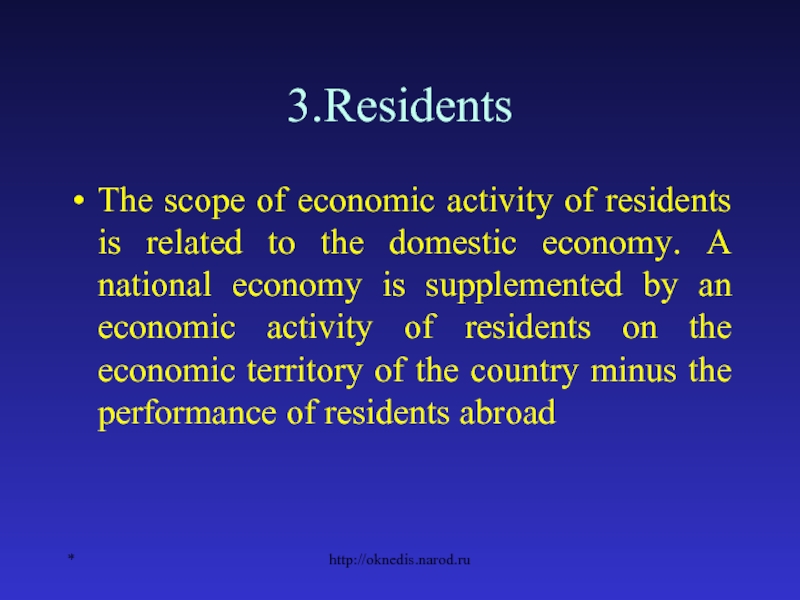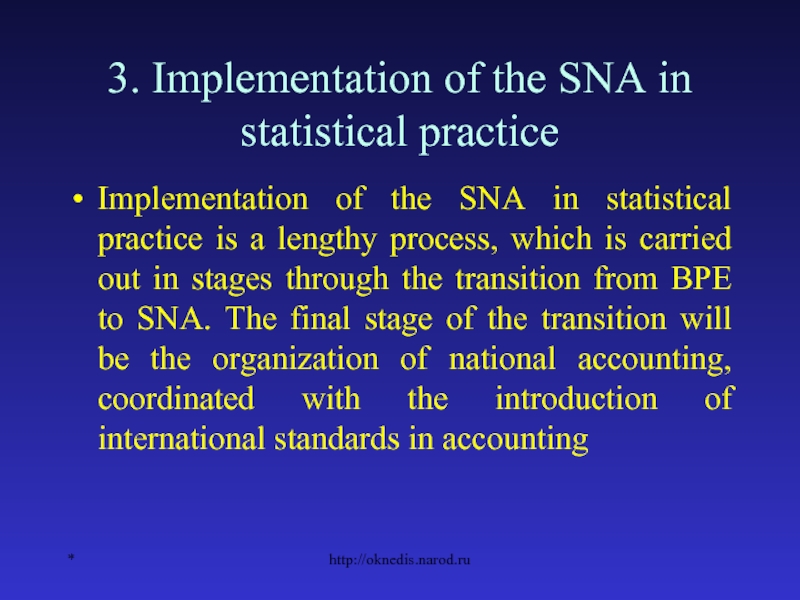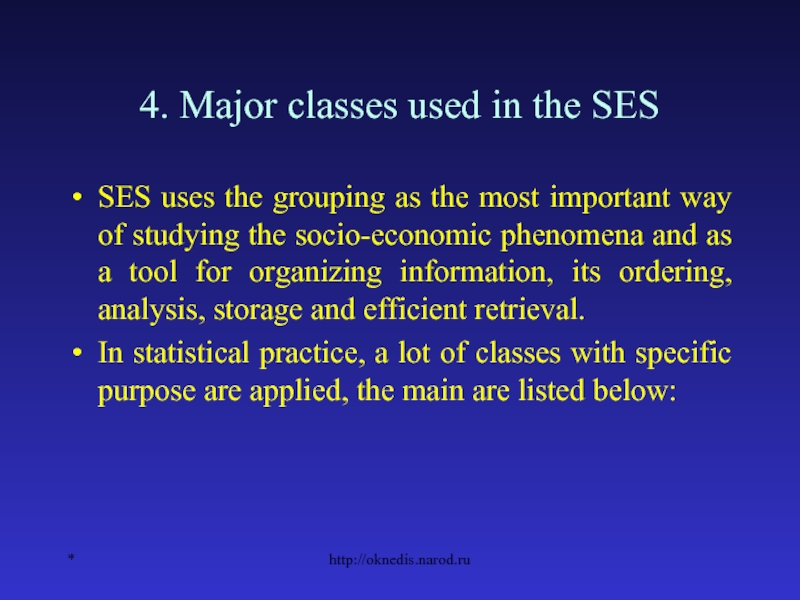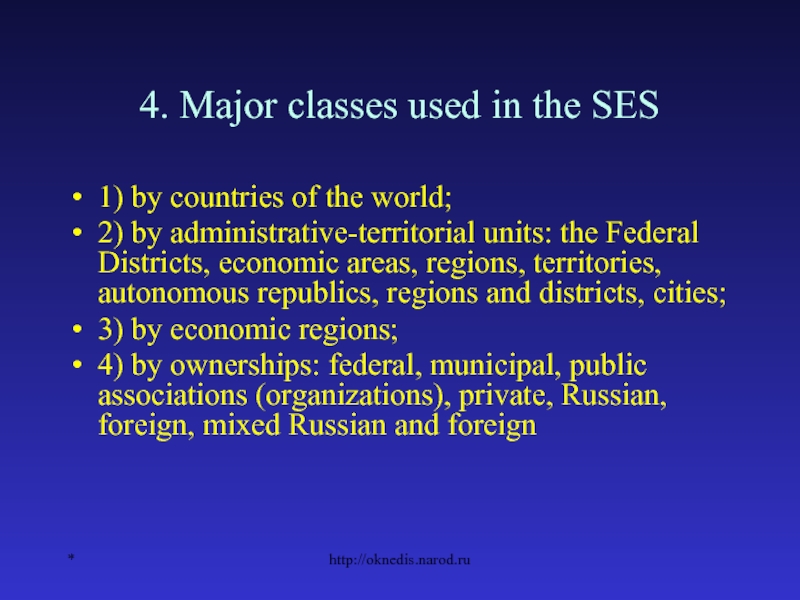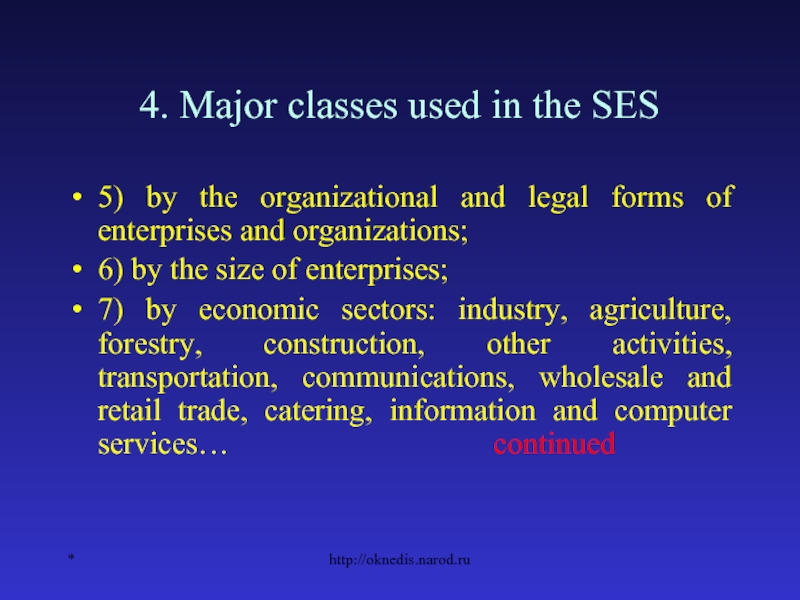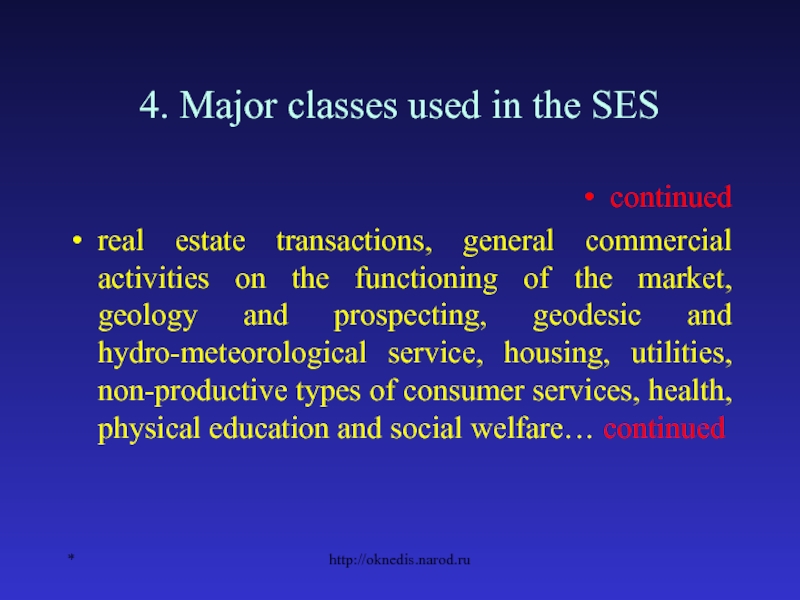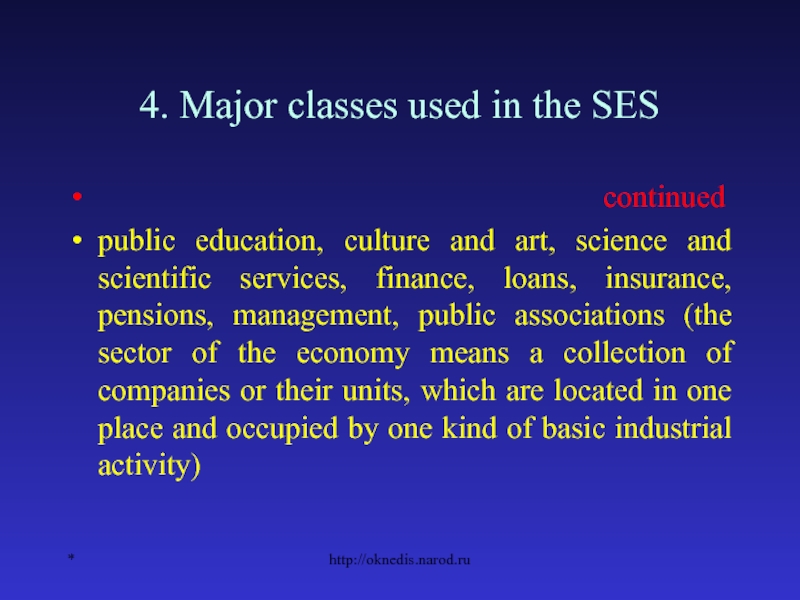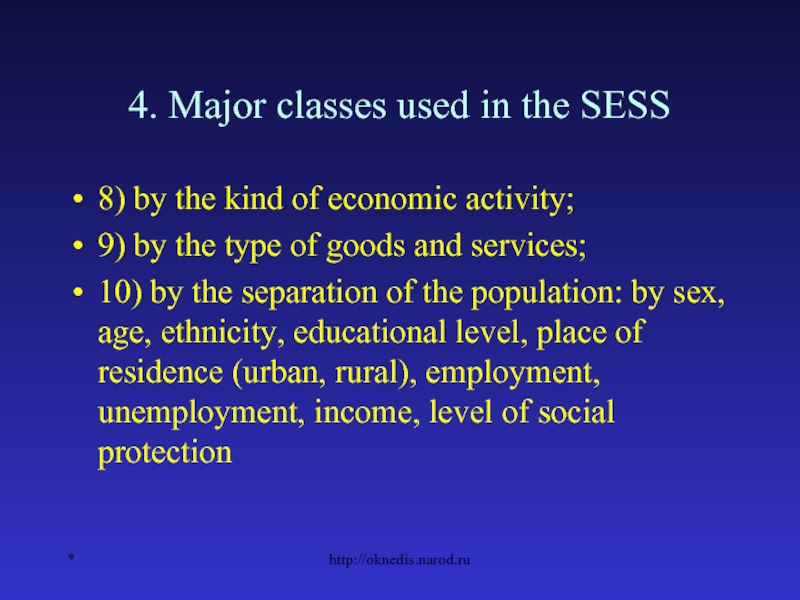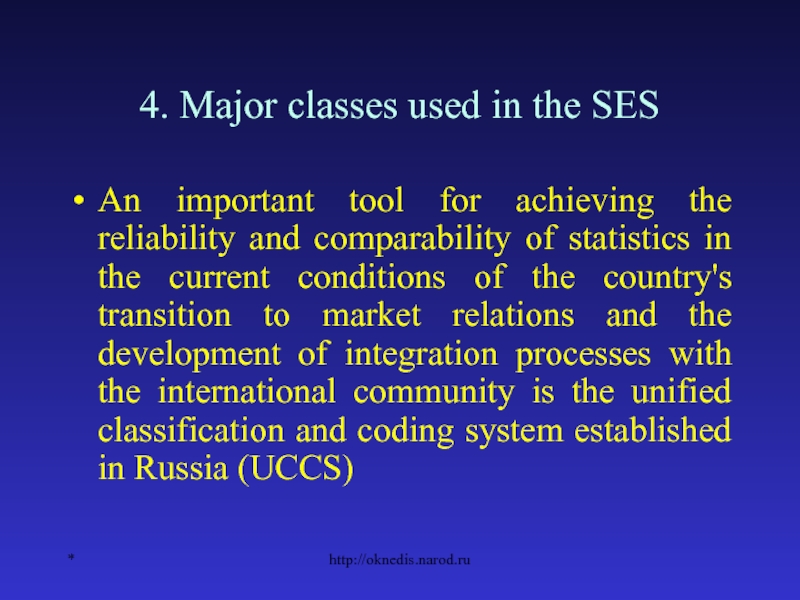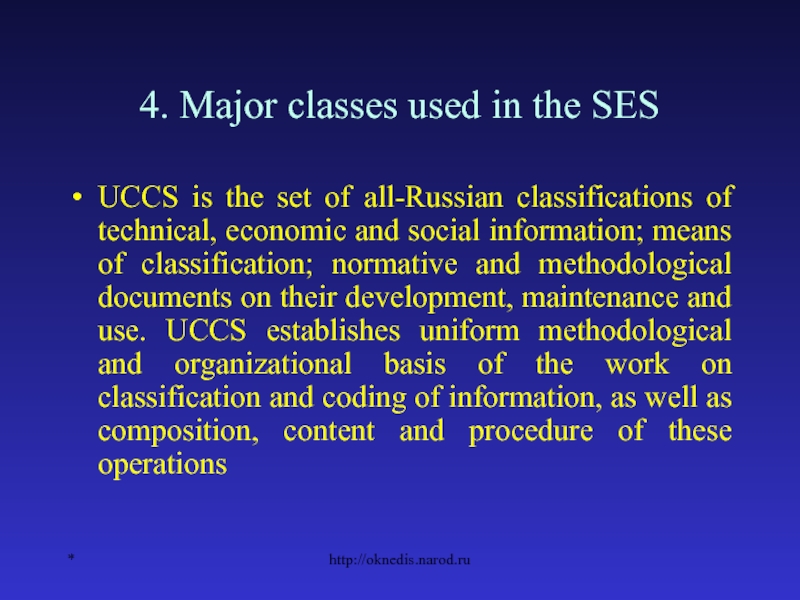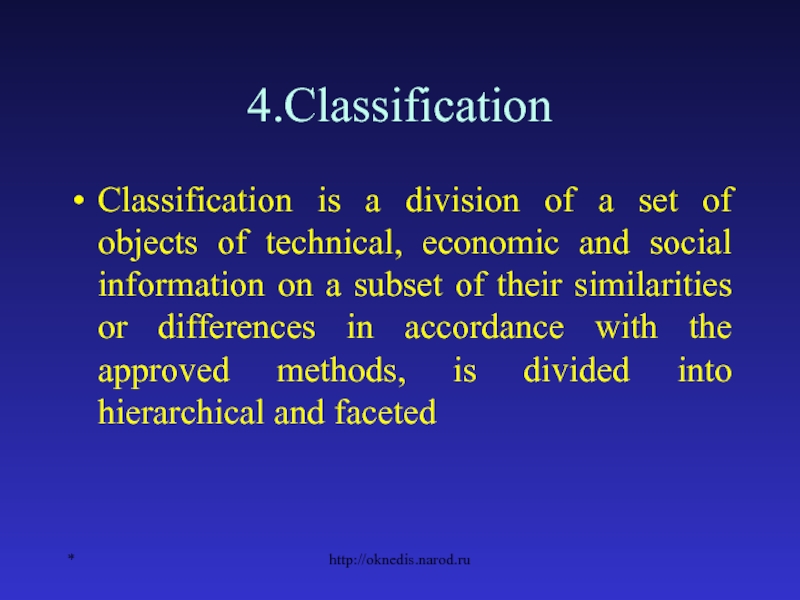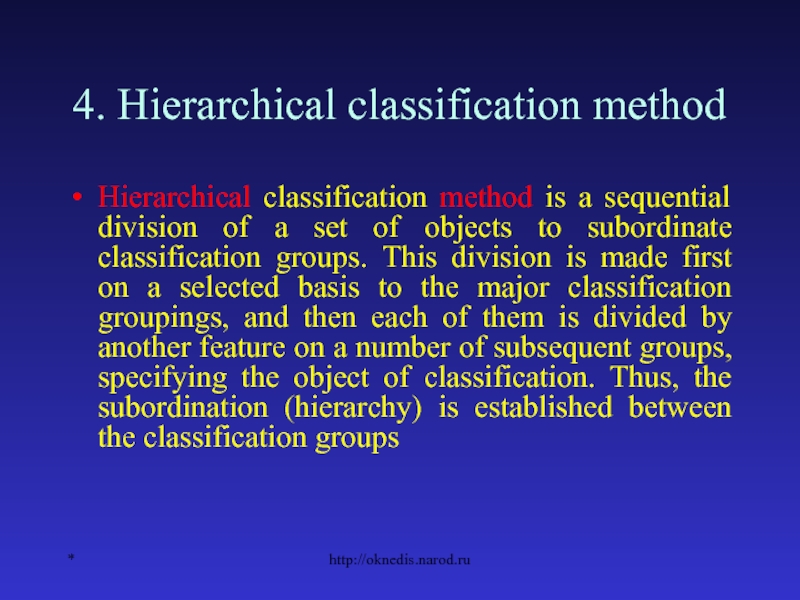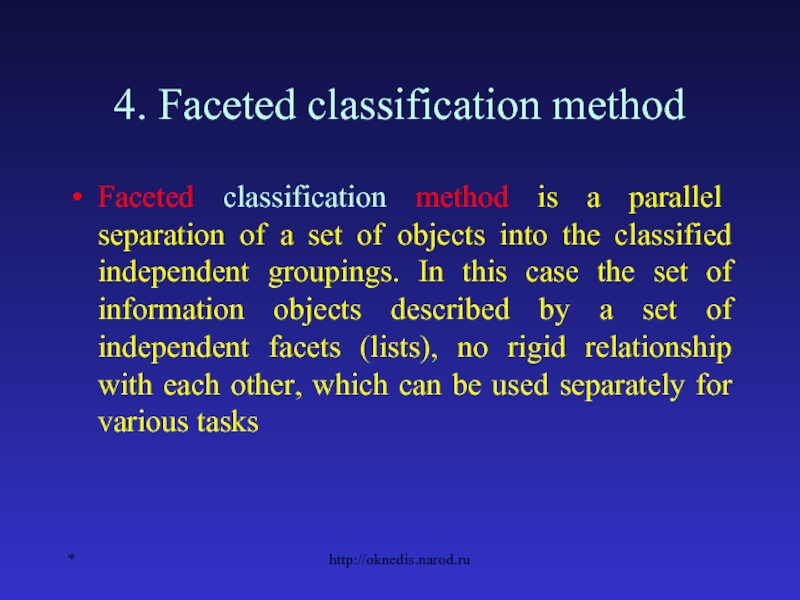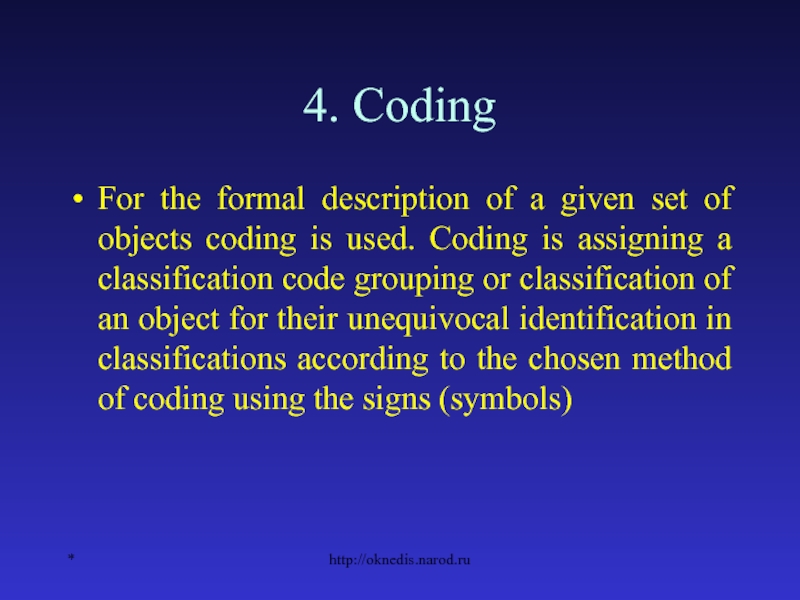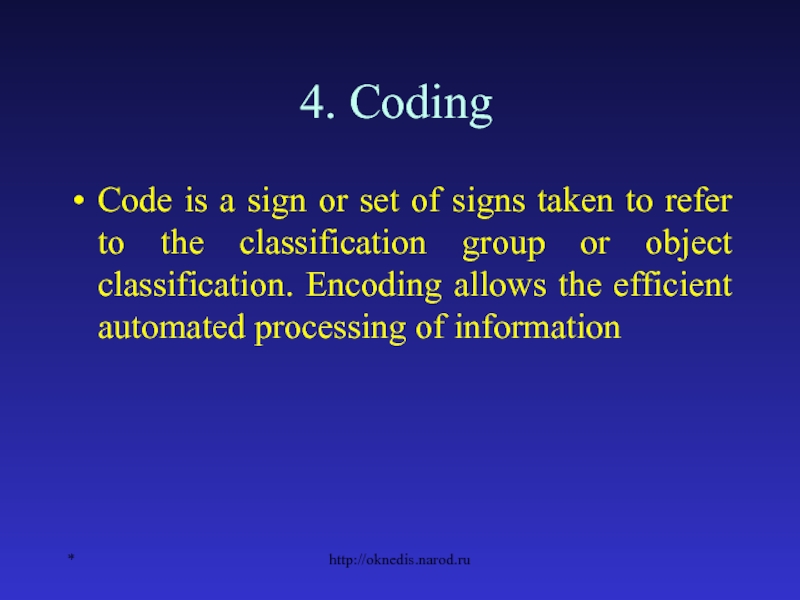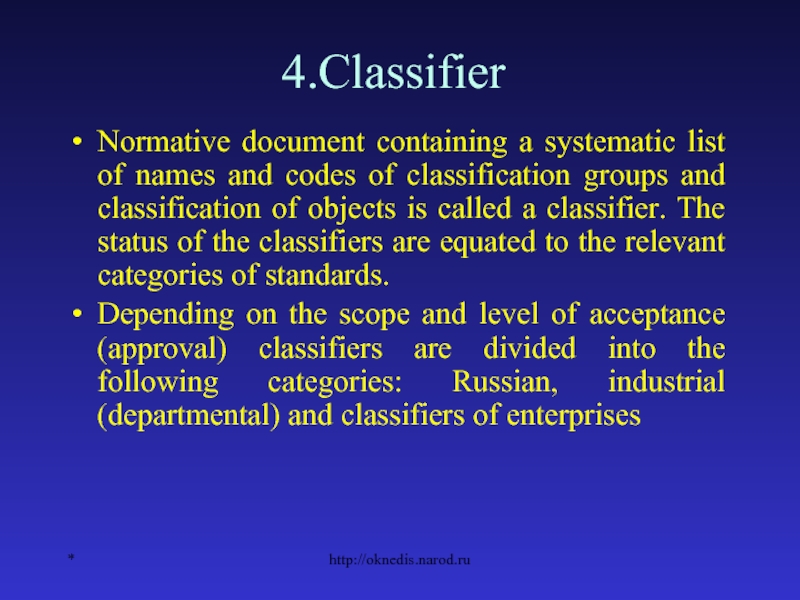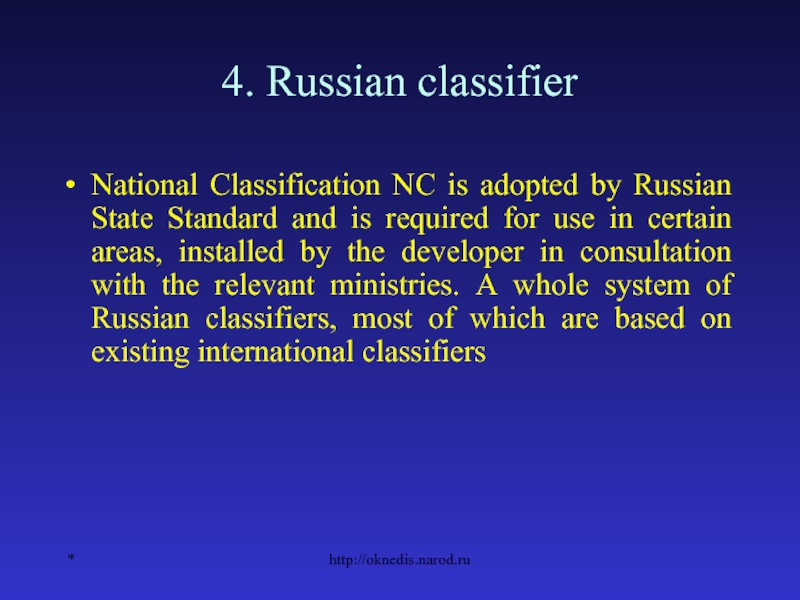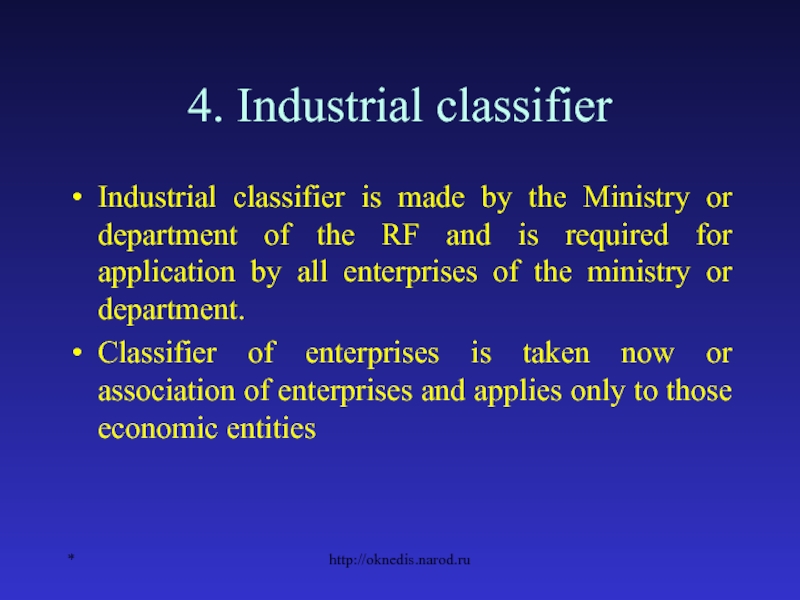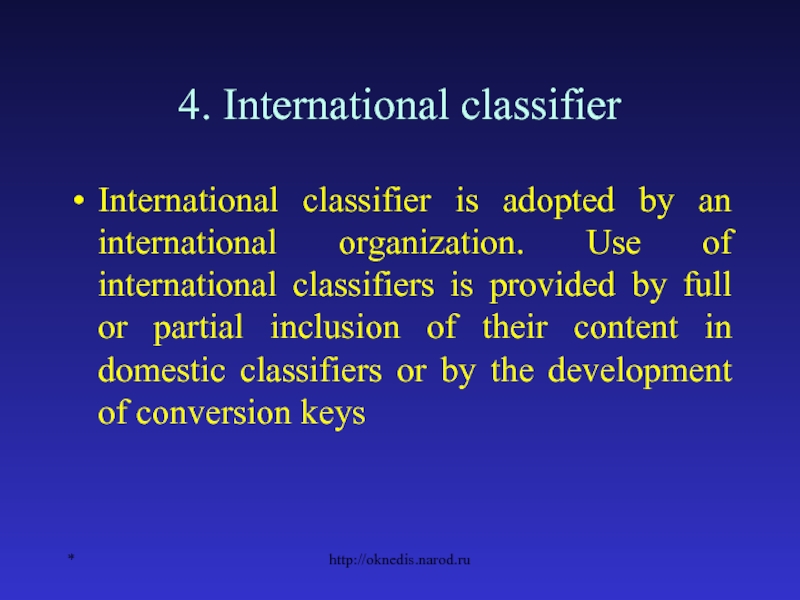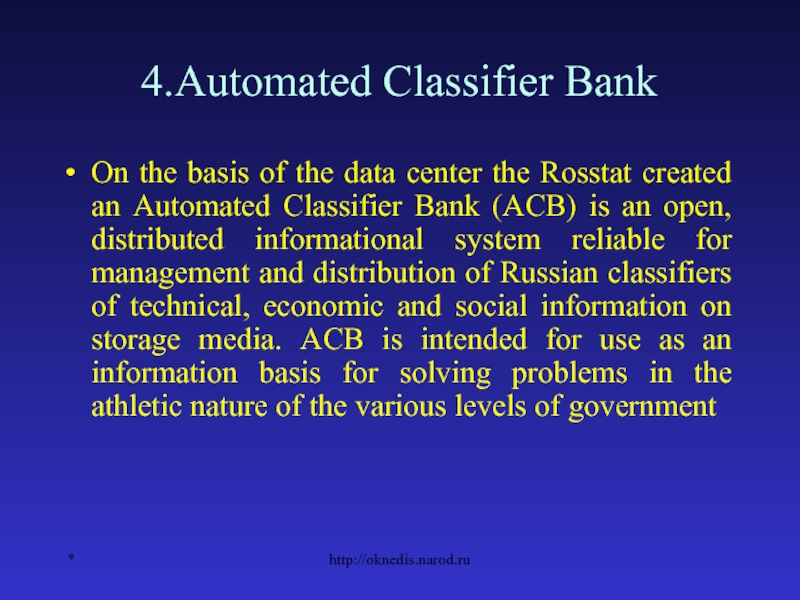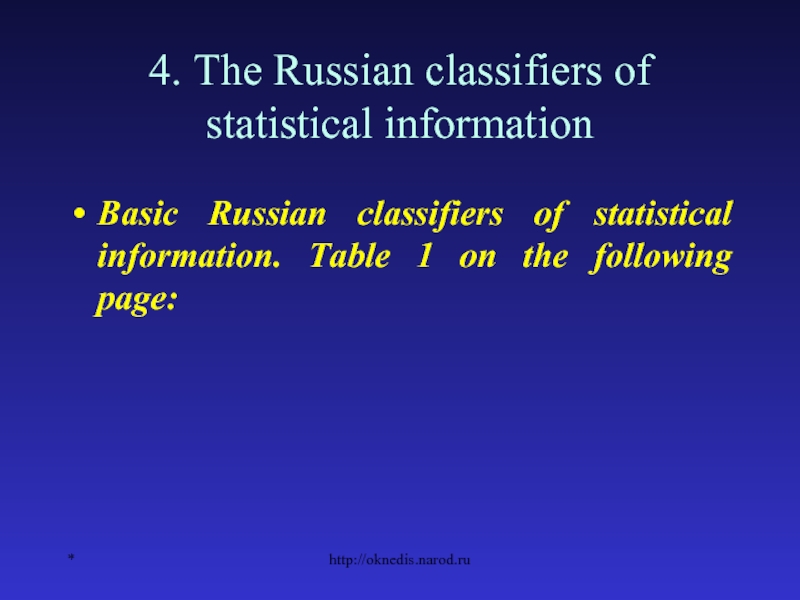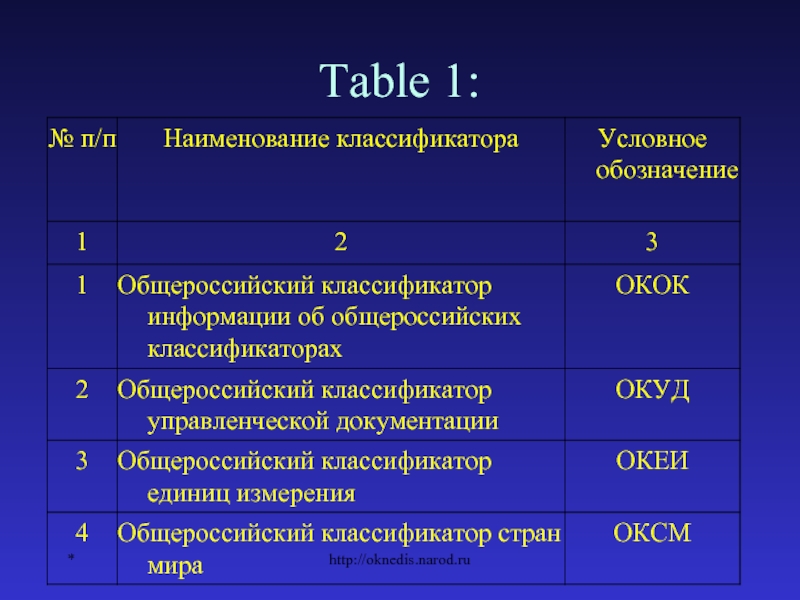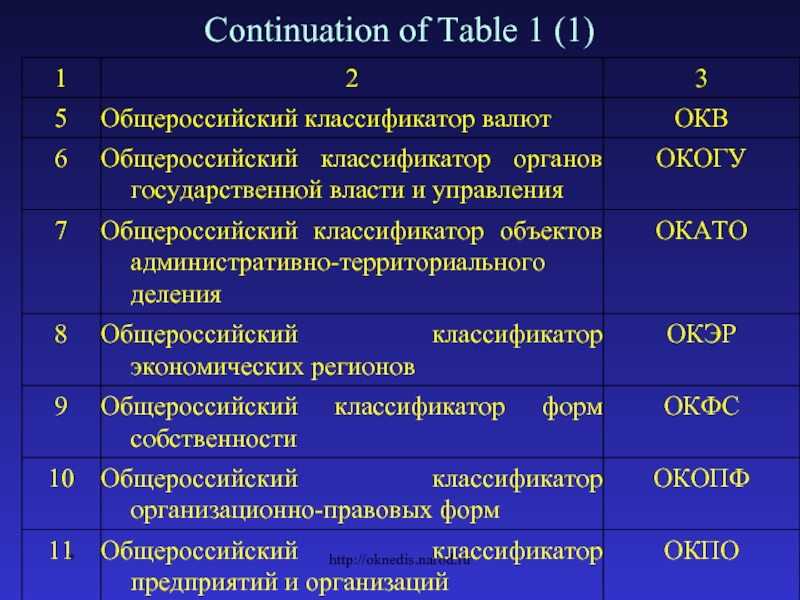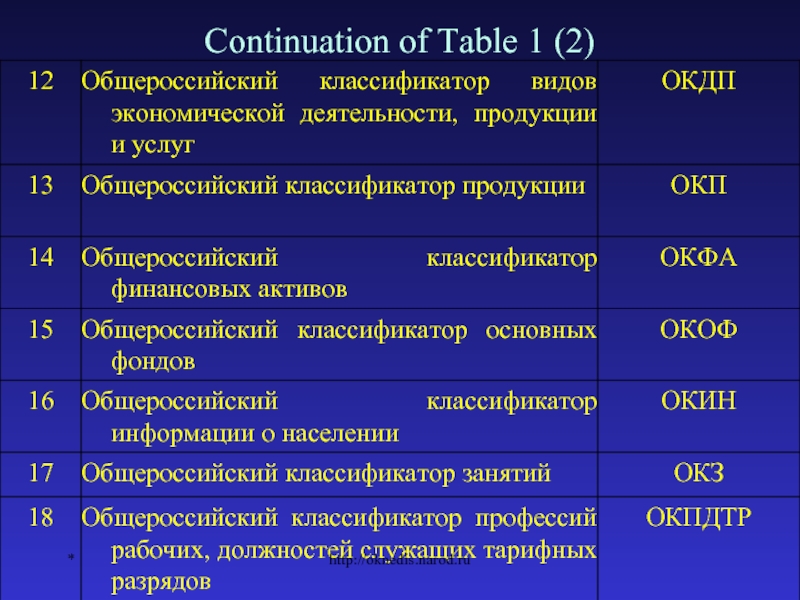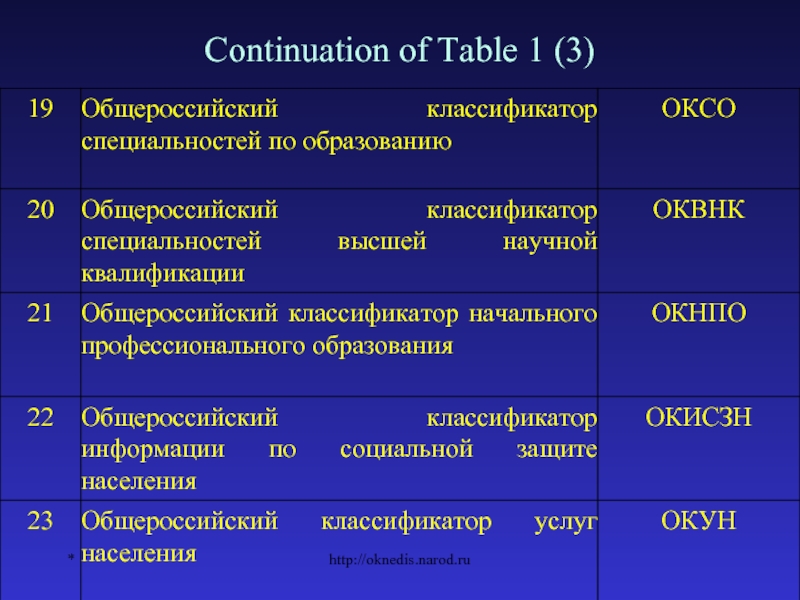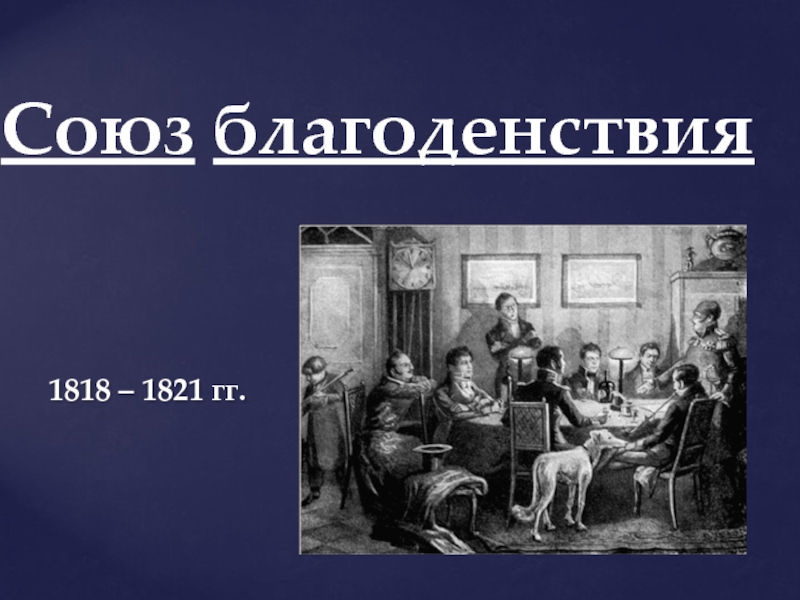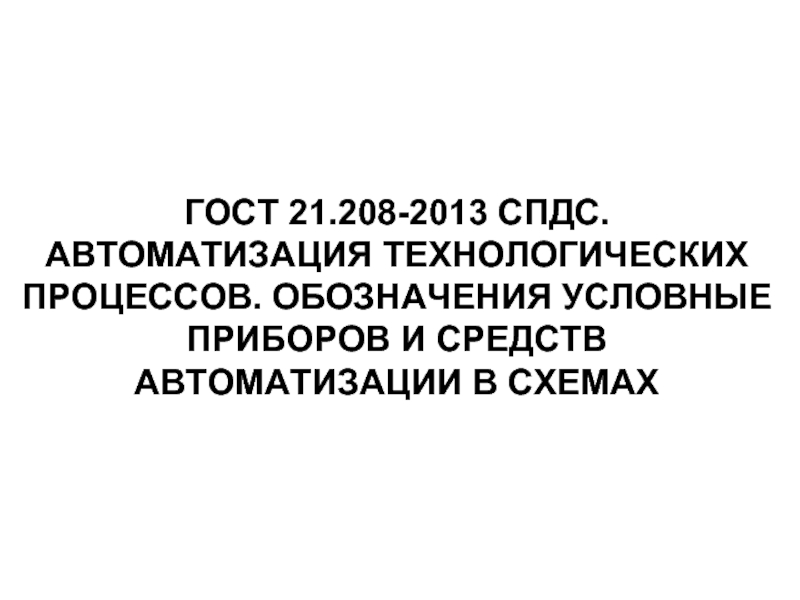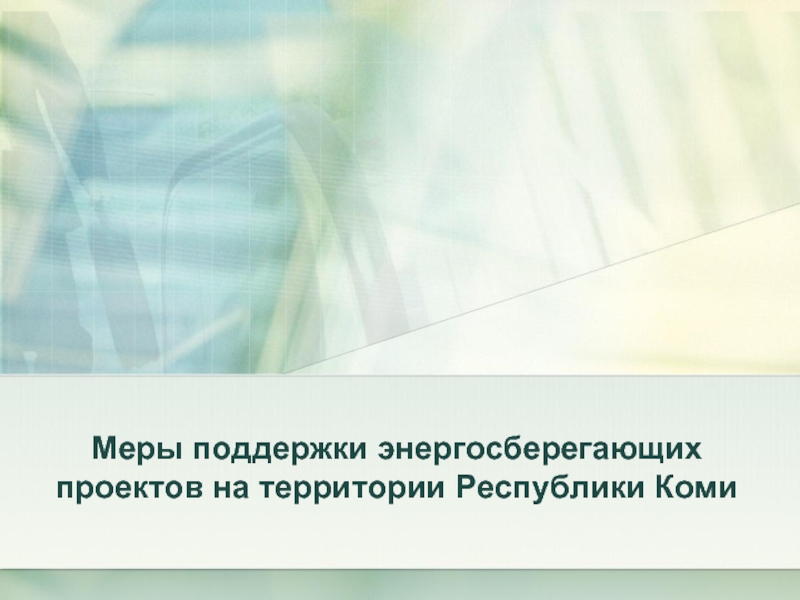- Главная
- Разное
- Дизайн
- Бизнес и предпринимательство
- Аналитика
- Образование
- Развлечения
- Красота и здоровье
- Финансы
- Государство
- Путешествия
- Спорт
- Недвижимость
- Армия
- Графика
- Культурология
- Еда и кулинария
- Лингвистика
- Английский язык
- Астрономия
- Алгебра
- Биология
- География
- Детские презентации
- Информатика
- История
- Литература
- Маркетинг
- Математика
- Медицина
- Менеджмент
- Музыка
- МХК
- Немецкий язык
- ОБЖ
- Обществознание
- Окружающий мир
- Педагогика
- Русский язык
- Технология
- Физика
- Философия
- Химия
- Шаблоны, картинки для презентаций
- Экология
- Экономика
- Юриспруденция
SES – Introduction презентация
Содержание
- 1. SES – Introduction
- 2. 1. What does SES examine? Socio-economic statistics
- 3. What does SES examine? SES is
- 4. 1.What does SES examine? Skillful handling with
- 5. 1. As the result of studying socio-economic
- 6. 1. As the result of studying socio-economic
- 7. 1. As the result of studying socio-economic
- 8. 1. Preface Each topic includes key concepts,
- 9. 1.Subject, methods and objectives
- 10. 1. What does SES examine?
- 11. 1. What does SES examine?
- 12. 1. What does SES examine?
- 13. 1. SES Objectives SES objectives
- 14. SES Objectives At various stages
- 15. 1. SES Objectives Under current
- 16. 1. Subject, methods
- 17. 1. Place of SES in the
- 18. 1. The theoretical basis of SES is
- 19. 1. Place of SES in the
- 20. 1. SES and economic theory Economic theory
- 21. 1. SES and economic theory There is
- 22. 1. SES and economic theory A distinctive
- 23. 1. The methodological basis of SES
- 24. 1. Relationship of SES with other economic
- 25. 1. Relationship of SES to other economic
- 26. 1. Basics of SES
- 27. 1. Subject, methods and
- 28. 1. Basics of SES
- 29. 1. The main objectives of the
- 30. 1. The main objectives of the
- 31. 1. The main objectives of the
- 32. 1. SES Objectives Statistical problems are
- 33. 1. SES Objectives Consequently, the main
- 34. 1. Economic phenomena and processes described
- 35. 1. Economic phenomena and processes described
- 36. 1. Economic phenomena and processes described
- 37. 1. Economic phenomena and processes described
- 38. 1. Economic phenomena and processes described
- 39. 1. Economic phenomena and processes described
- 40. 1. Economic phenomena and processes described
- 41. * http://oknedis.narod.ru
- 42. 1. The objective of SES is
- 43. 2. SES system of indicators In accordance
- 44. 2. SES system of indicators consists of
- 45. 2. SES system of indicators 2.
- 46. 2. SES system of indicators 3. Statistics
- 47. 2. SES system of indicators Each of
- 48. 2. Features of SES indicators: variety of
- 49. 2. Features of SES indicators: 2) relationship
- 50. 2. Features of SES indicators: 3) historic
- 51. 2. SES System of Indicators The central
- 52. 3. Macroeconomic models of statistics The Russian
- 53. 3. Macroeconomic models of statistics Macroeconomic model
- 54. 3. Macroeconomic models of statistics International accounting
- 55. 3. Macroeconomic models of statistics The results
- 56. 3. SNA - a system of interrelated
- 57. 3. SNA International organizations are engaged
- 58. 3. SNA SNA is formulated in
- 59. 3. Economic Production The
- 60. 3. Economic Production In the SNA the
- 61. 3. Economic Activity This shows that economic
- 62. 3. Economic turnover The central category of
- 63. 3. Institutional unit Institutional unit is such
- 64. 3. Assets Assets are the economic objects
- 65. 3. There are two groups of institutional
- 66. 3. Institutional units Institutional units are classified
- 67. 3. Economic territory Economic territory is this
- 68. 3. Economic territory “The territorial enclaves” in
- 69. 3. Residents Residents are natural or legal
- 70. 3.Residents and nonresidents Nonresidents are governments of
- 71. 3.Residents The scope of economic activity of
- 72. 3. Implementation of the SNA in statistical
- 73. 4. Major classes used in the SES
- 74. 4. Major classes used in the SES
- 75. 4. Major classes used in the SES
- 76. 4. Major classes used in the SES
- 77. 4. Major classes used in the SES
- 78. 4. Major classes used in the SESS
- 79. 4. Major classes used in the SES
- 80. 4. Major classes used in the SES
- 81. 4.Classification Classification is a division of a
- 82. 4. Hierarchical classification method Hierarchical classification method
- 83. 4. Faceted classification method Faceted classification method
- 84. 4. Coding For the formal description of
- 85. 4. Coding Code is a sign or
- 86. 4.Classifier Normative document containing a systematic list
- 87. 4. Russian classifier National Classification NC is
- 88. 4. Industrial classifier Industrial classifier is made
- 89. 4. International classifier International classifier is adopted
- 90. 4.Automated Classifier Bank On the basis of
- 91. 4. The Russian classifiers of statistical information
- 92. Table 1: * http://oknedis.narod.ru
- 93. Continuation of Table 1 (1) * http://oknedis.narod.ru
- 94. Continuation of Table 1 (2) * http://oknedis.narod.ru
- 95. Continuation of Table 1 (3) * http://oknedis.narod.ru
- 96. Ready to answer all your questions Thank
Слайд 21. What does SES examine?
Socio-economic statistics is a basic scientific discipline
*
http://oknedis.narod.ru
Слайд 3
What does SES examine?
SES is a special, one of the most
*
http://oknedis.narod.ru
Слайд 41.What does SES examine?
Skillful handling with statistical information promotes the formation
*
http://oknedis.narod.ru
Слайд 51. As the result of studying socio-economic statistics a student must:
know
*
http://oknedis.narod.ru
Слайд 61. As the result of studying socio-economic statistics a student must:
acquire
*
http://oknedis.narod.ru
Слайд 71. As the result of studying socio-economic statistics a student must:
know
*
http://oknedis.narod.ru
Слайд 81. Preface
Each topic includes key concepts, definitions and methodology for calculating
*
http://oknedis.narod.ru
Слайд 9
1.Subject, methods and objectives of the SES
Socio-economic statistics SES studies the
*
http://oknedis.narod.ru
Слайд 10
1. What does SES examine?
The simplest indicators of quantitative measurement of
*
http://oknedis.narod.ru
Слайд 11
1. What does SES examine?
In some cases, SES measures complex
*
http://oknedis.narod.ru
Слайд 12
1. What does SES examine?
The data of economic statistics can provide
*
http://oknedis.narod.ru
Слайд 13
1. SES Objectives
SES objectives are determined by its subject and the
*
http://oknedis.narod.ru
Слайд 14
SES Objectives
At various stages of development of society, global task is
*
http://oknedis.narod.ru
Слайд 15
1. SES Objectives
Under current conditions the central task of the SES
*
http://oknedis.narod.ru
Слайд 16
1. Subject, methods and objectives of SES
SES objectives:
а) studying the
б) analysis of social phenomena that influence the economy.
Economic statistics is closely linked to other sections of statistics
Theory of Statistics ascertains the nature, formulates a scientific definition of basic categories and concepts of statistics, developing methods for producing, processing and analysis of statistical data
*
http://oknedis.narod.ru
Слайд 17
1. Place of SES in the Science
SES is an independent scientific
*
http://oknedis.narod.ru
Слайд 181. The theoretical basis of SES
is general economic theory, which reveals
*
http://oknedis.narod.ru
Слайд 19
1. Place of SES in the Science
In turn, in economic theory
*
http://oknedis.narod.ru
Слайд 201. SES and economic theory
Economic theory is used in statistics as
*
http://oknedis.narod.ru
Слайд 211. SES and economic theory
There is a feedback between them: the
*
http://oknedis.narod.ru
Слайд 221. SES and economic theory
A distinctive feature of the relationship between
*
http://oknedis.narod.ru
Слайд 231. The methodological basis of SES
is a general theory
*
http://oknedis.narod.ru
Слайд 241. Relationship of SES with other economic sciences
SES is inextricably linked
*
http://oknedis.narod.ru
Слайд 251. Relationship of SES to other economic sciences
SES does not
*
http://oknedis.narod.ru
Слайд 26
1. Basics of SES
In SES the questions of application of aggregate
*
http://oknedis.narod.ru
Слайд 27
1. Subject, methods and objectives of SES
Economic statistics examines the
Statistics of industries studies the processes occurring in the given industry.
Social statistics studies such phenomena as the standard of living, consuming goods and services by population, education, the reproduction of the material and cultural wealth.
All sections of the SES are linked. The unity lies in the fact that all spheres of life having quantitative aspects are inseparable from the qualitative side
*
http://oknedis.narod.ru
Слайд 28
1. Basics of SES
SES explores the national economy, gives a specific
*
http://oknedis.narod.ru
Слайд 29
1. The main objectives of the SES are:
providing the controlling governmental
*
http://oknedis.narod.ru
Слайд 30
1. The main objectives of the SES are:
providing with information about
*
http://oknedis.narod.ru
Слайд 31
1. The main objectives of the SES are:
informing about the main
*
http://oknedis.narod.ru
Слайд 32
1. SES Objectives
Statistical problems are closely linked with socio-political structure. Thus,
*
http://oknedis.narod.ru
Слайд 33
1. SES Objectives
Consequently, the main tasks of statistics in a market
size and structure of the population, its distribution across regions and territories, the most important indicators of its reproduction
*
http://oknedis.narod.ru
Слайд 34
1. Economic phenomena and processes described and analysed by SES:
national economic
the main results of the economic process, the size and structure of the manufactured product, economic growth, the use of manufactured product on saving (including investments) and consumption, the proportions of branches and sectors in the economy
*
http://oknedis.narod.ru
Слайд 35
1. Economic phenomena and processes described and analysed by SES:
results of
distribution of income;
primary and secondary distribution, formation of the final revenue and its use, the differences in the distribution of income between different groups
*
http://oknedis.narod.ru
Слайд 36
1. Economic phenomena and processes described and analysed by SES:
inflation and
employment and unemployment, the factors affecting the rates of employment and unemployment;
the standard of living of the population and its dynamics, key factors influencing the level of welfare, consumption of goods and services, income and savings, household assets, financial assets of households, availability of consumer durables, social and cultural conditions of life
*
http://oknedis.narod.ru
Слайд 37
1. Economic phenomena and processes described and analysed by SES:
the development
health condition of population;
housing and communal utilities and services, the size and structure of the housing stock, public services and amenities
*
http://oknedis.narod.ru
Слайд 38
1. Economic phenomena and processes described and analysed by SES:
investment process,
functioning of financial system: the state budget, financial transactions carried out by different sectors of the economy, money supply in circulation, the amount of granted loans, financial debts, the operations of insurance companies, stock market, securities transactions
*
http://oknedis.narod.ru
Слайд 39
1. Economic phenomena and processes described and analysed by SES:
foreign economic
loans, structure and dynamics of international reserves;
development of science and technology, the impact of technological progress on economic growth;
the condition of environment and measures for its protection, the costs of environmental protection
*
http://oknedis.narod.ru
Слайд 40
1. Economic phenomena and processes described and analysed by SES:
production and
the most important quality characteristics of economic development: productivity, productivity of capital resources and other economic resources;
characteristic of economic agents
*
http://oknedis.narod.ru
Слайд 421. The objective of SES is
obtaining quantitative and qualitative
Thus, SES is exploring the massive economic, social processes and phenomena at the macro level, reveals the inherent regularity, gives quantitative-qualitative characteristics of the economic laws in specific circumstances
*
http://oknedis.narod.ru
Слайд 432. SES system of indicators
In accordance with the its object and
*
http://oknedis.narod.ru
Слайд 442. SES system of indicators
consists of 3 groups:
1. Statistics
population, labor force and labor market;
national welfare
*
http://oknedis.narod.ru
Слайд 452. SES system of indicators
2. Statistics of economic performance:
production and
market of goods and services;
cost of production of goods and services;
finances;
efficiency of economic performance
*
http://oknedis.narod.ru
Слайд 462. SES system of indicators
3. Statistics of living standards:
people’s income;
consumption of
condition and development of industries serving the public
*
http://oknedis.narod.ru
Слайд 472. SES system of indicators
Each of these groups is constructed as
*
http://oknedis.narod.ru
Слайд 482. Features of SES indicators:
variety of indicators
They may
*
http://oknedis.narod.ru
Слайд 492. Features of SES indicators:
2) relationship and the unity of indicators
*
http://oknedis.narod.ru
Слайд 502. Features of SES indicators:
3) historic nature of the system of
*
http://oknedis.narod.ru
Слайд 512. SES System of Indicators
The central link of the reform of
*
http://oknedis.narod.ru
Слайд 523. Macroeconomic models of statistics
The Russian system of accounting and statistics
*
http://oknedis.narod.ru
Слайд 533. Macroeconomic models of statistics
Macroeconomic model of the system was the
*
http://oknedis.narod.ru
Слайд 543. Macroeconomic models of statistics
International accounting and statistical system used by
*
http://oknedis.narod.ru
Слайд 553. Macroeconomic models of statistics
The results of those and the other’s
*
http://oknedis.narod.ru
Слайд 563. SNA -
a system of interrelated indicators and classifications used to
*
http://oknedis.narod.ru
Слайд 573. SNA
International organizations are engaged in developing standards for national
*
http://oknedis.narod.ru
Слайд 583. SNA
SNA is formulated in the concepts, categories and terms
*
http://oknedis.narod.ru
Слайд 593. Economic Production
The source for SNA is the
Economic production is an area where the production of national product takes place
*
http://oknedis.narod.ru
Слайд 603. Economic Production
In the SNA the concept of economic production covers
*
http://oknedis.narod.ru
Слайд 613. Economic Activity
This shows that economic activity is all activities which
*
http://oknedis.narod.ru
Слайд 623. Economic turnover
The central category of SNA is the economic turnover,
*
http://oknedis.narod.ru
Слайд 633. Institutional unit
Institutional unit is such a unit of management, which
*
http://oknedis.narod.ru
Слайд 643. Assets
Assets are the economic objects in the respect of which
*
http://oknedis.narod.ru
Слайд 653. There are two groups of institutional units:
1) legal entities (companies,
2) households - a group of people (or one person) living in the same room, pooling all of their income and assets (or part of them) and jointly implementing spending on consumption goods and services, mainly for housing and food
*
http://oknedis.narod.ru
Слайд 663. Institutional units
Institutional units are classified in terms of their interests
*
http://oknedis.narod.ru
Слайд 673. Economic territory
Economic territory is this territory under the administrative control
*
http://oknedis.narod.ru
Слайд 683. Economic territory
“The territorial enclaves” in other countries of the world
*
http://oknedis.narod.ru
Слайд 693. Residents
Residents are natural or legal entities residing in this country
*
http://oknedis.narod.ru
Слайд 703.Residents and nonresidents
Nonresidents are governments of foreign countries, international organizations, their
*
http://oknedis.narod.ru
Слайд 713.Residents
The scope of economic activity of residents is related to the
*
http://oknedis.narod.ru
Слайд 723. Implementation of the SNA in statistical practice
Implementation of the SNA
*
http://oknedis.narod.ru
Слайд 734. Major classes used in the SES
SES uses the grouping as
In statistical practice, a lot of classes with specific purpose are applied, the main are listed below:
*
http://oknedis.narod.ru
Слайд 744. Major classes used in the SES
1) by countries of the
2) by administrative-territorial units: the Federal Districts, economic areas, regions, territories, autonomous republics, regions and districts, cities;
3) by economic regions;
4) by ownerships: federal, municipal, public associations (organizations), private, Russian, foreign, mixed Russian and foreign
*
http://oknedis.narod.ru
Слайд 754. Major classes used in the SES
5) by the organizational and
6) by the size of enterprises;
7) by economic sectors: industry, agriculture, forestry, construction, other activities, transportation, communications, wholesale and retail trade, catering, information and computer services… continued
*
http://oknedis.narod.ru
Слайд 764. Major classes used in the SES
continued
real estate transactions, general commercial
*
http://oknedis.narod.ru
Слайд 774. Major classes used in the SES
public education, culture and art, science and scientific services, finance, loans, insurance, pensions, management, public associations (the sector of the economy means a collection of companies or their units, which are located in one place and occupied by one kind of basic industrial activity)
*
http://oknedis.narod.ru
Слайд 784. Major classes used in the SESS
8) by the kind of
9) by the type of goods and services;
10) by the separation of the population: by sex, age, ethnicity, educational level, place of residence (urban, rural), employment, unemployment, income, level of social protection
*
http://oknedis.narod.ru
Слайд 794. Major classes used in the SES
An important tool for achieving
*
http://oknedis.narod.ru
Слайд 804. Major classes used in the SES
UCCS is the set of
*
http://oknedis.narod.ru
Слайд 814.Classification
Classification is a division of a set of objects of technical,
*
http://oknedis.narod.ru
Слайд 824. Hierarchical classification method
Hierarchical classification method is a sequential division of
*
http://oknedis.narod.ru
Слайд 834. Faceted classification method
Faceted classification method is a parallel separation of
*
http://oknedis.narod.ru
Слайд 844. Coding
For the formal description of a given set of objects
*
http://oknedis.narod.ru
Слайд 854. Coding
Code is a sign or set of signs taken to
*
http://oknedis.narod.ru
Слайд 864.Classifier
Normative document containing a systematic list of names and codes of
Depending on the scope and level of acceptance (approval) classifiers are divided into the following categories: Russian, industrial (departmental) and classifiers of enterprises
*
http://oknedis.narod.ru
Слайд 874. Russian classifier
National Classification NC is adopted by Russian State Standard
*
http://oknedis.narod.ru
Слайд 884. Industrial classifier
Industrial classifier is made by the Ministry or department
Classifier of enterprises is taken now or association of enterprises and applies only to those economic entities
*
http://oknedis.narod.ru
Слайд 894. International classifier
International classifier is adopted by an international organization. Use
*
http://oknedis.narod.ru
Слайд 904.Automated Classifier Bank
On the basis of the data center the Rosstat
*
http://oknedis.narod.ru
Слайд 914. The Russian classifiers of statistical information
Basic Russian classifiers of statistical
*
http://oknedis.narod.ru
Слайд 96Ready to answer all your questions
Thank you for your attention! See
*
http://oknedis.narod.ru
